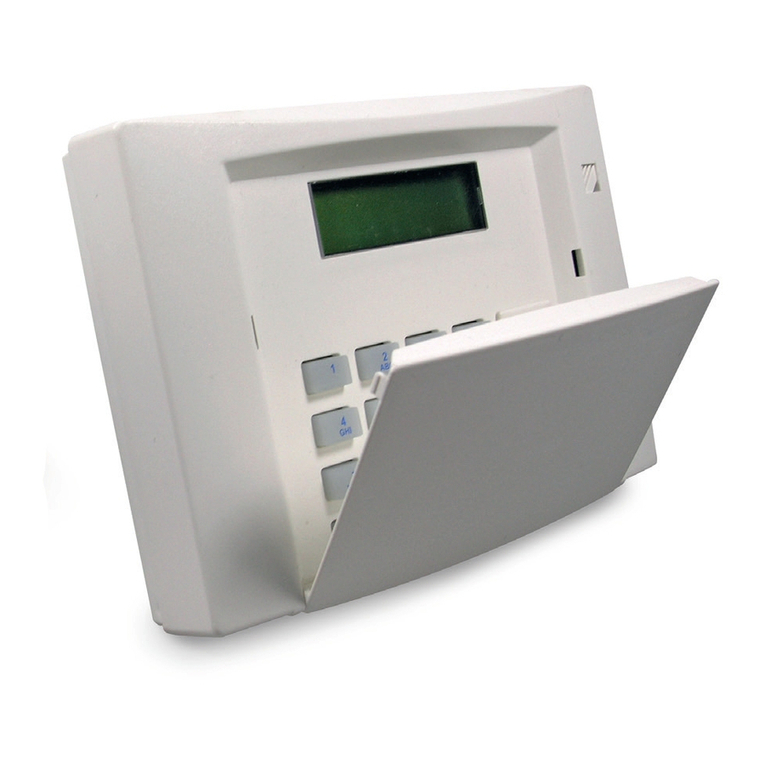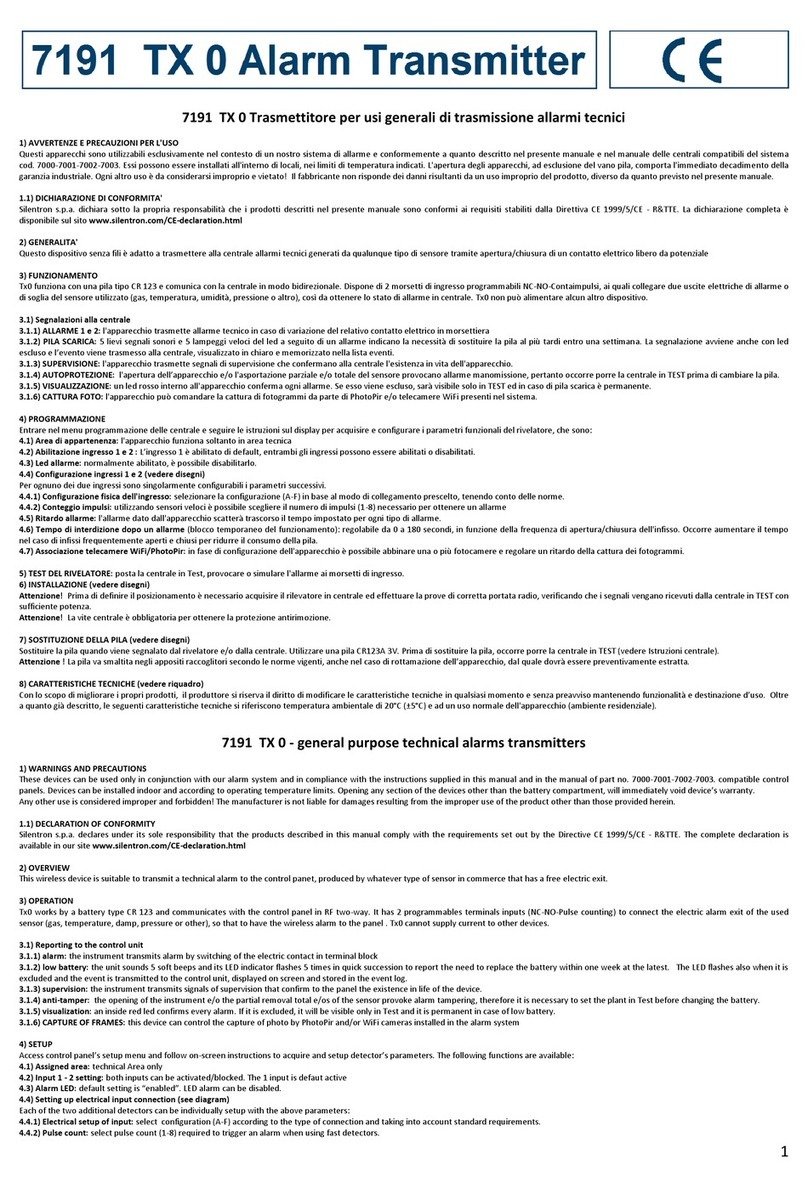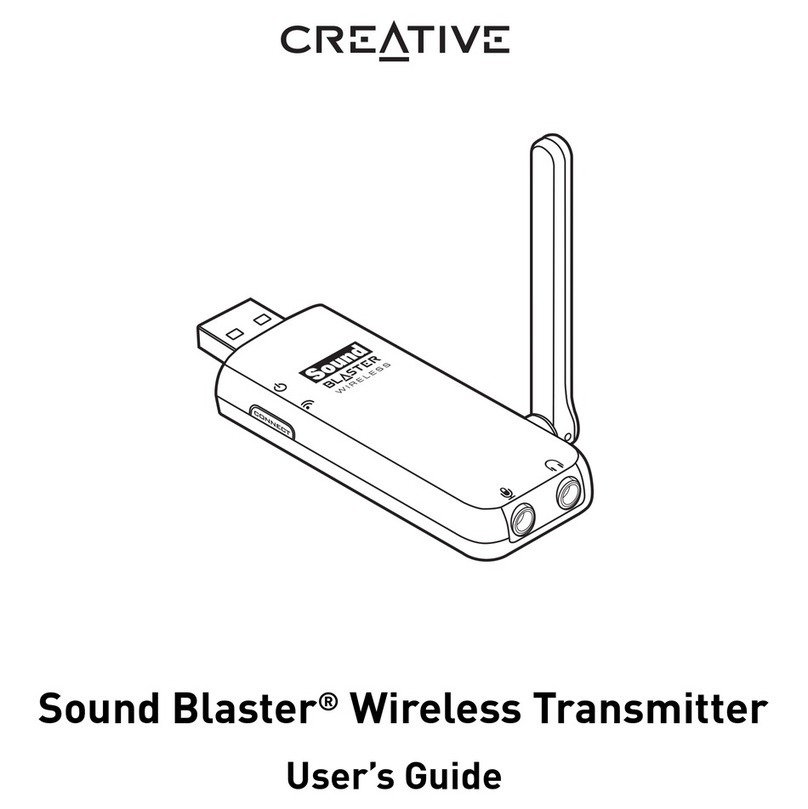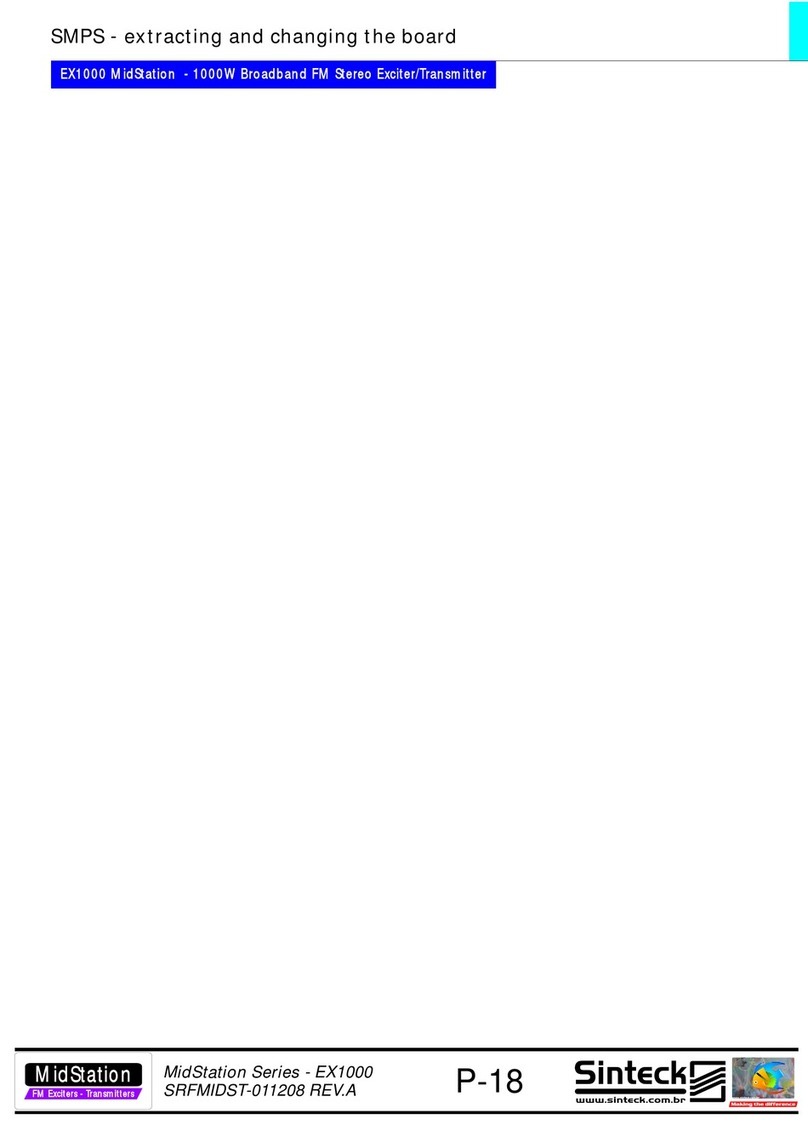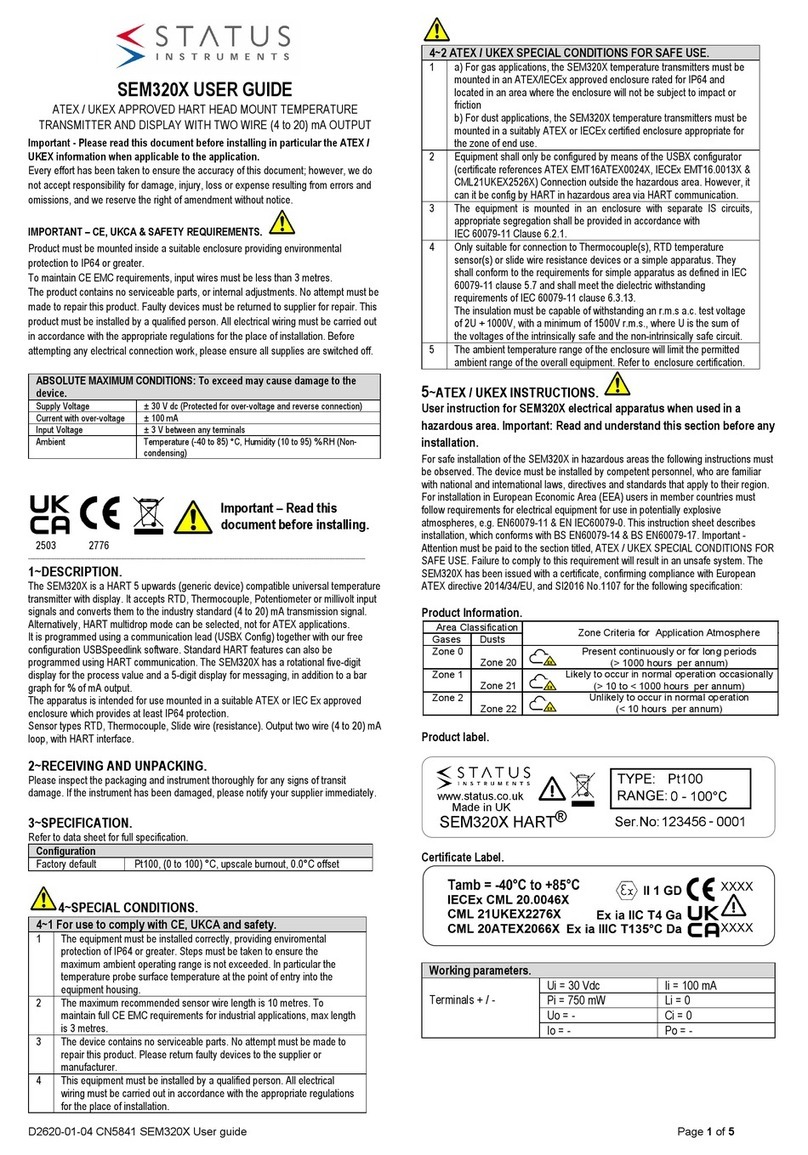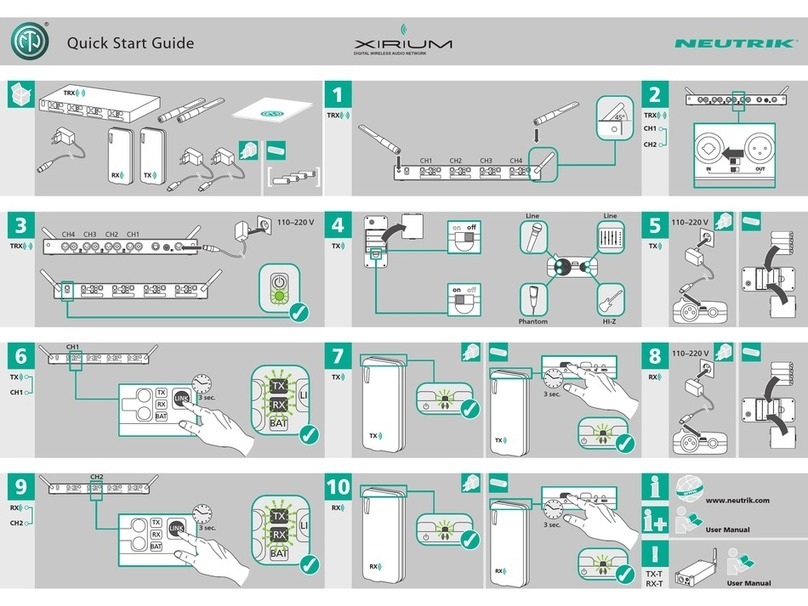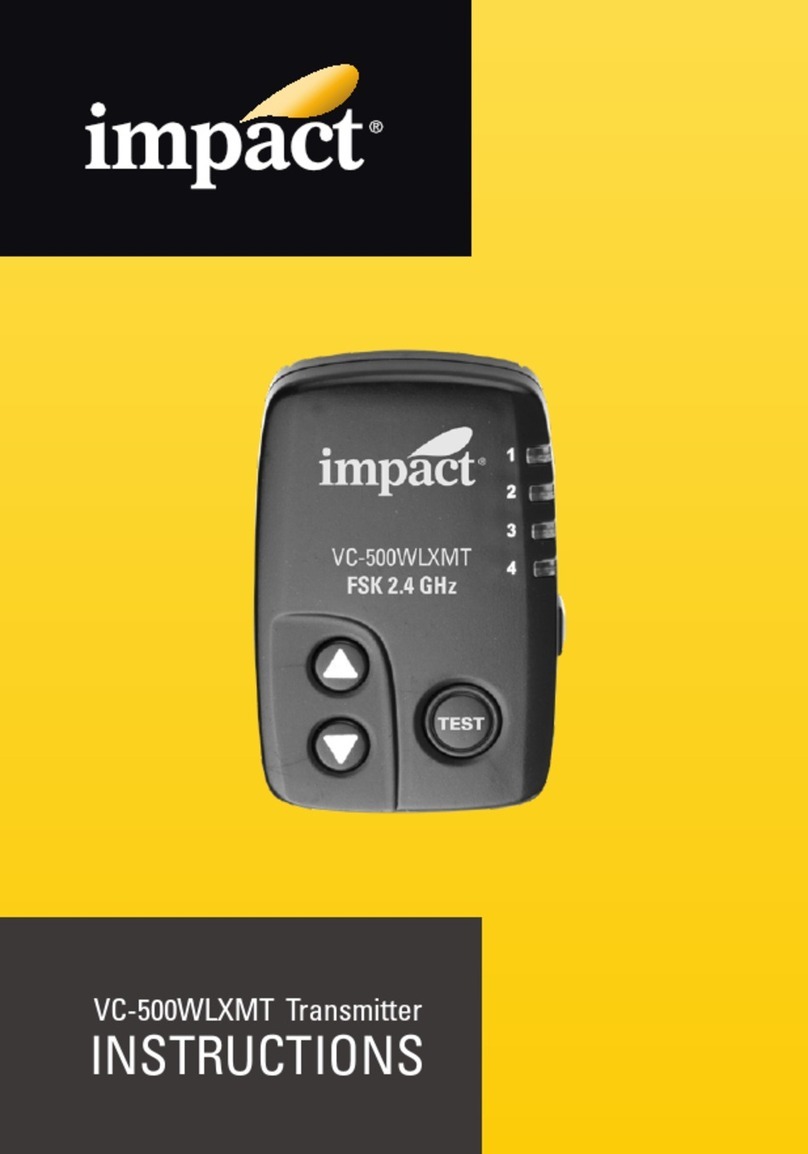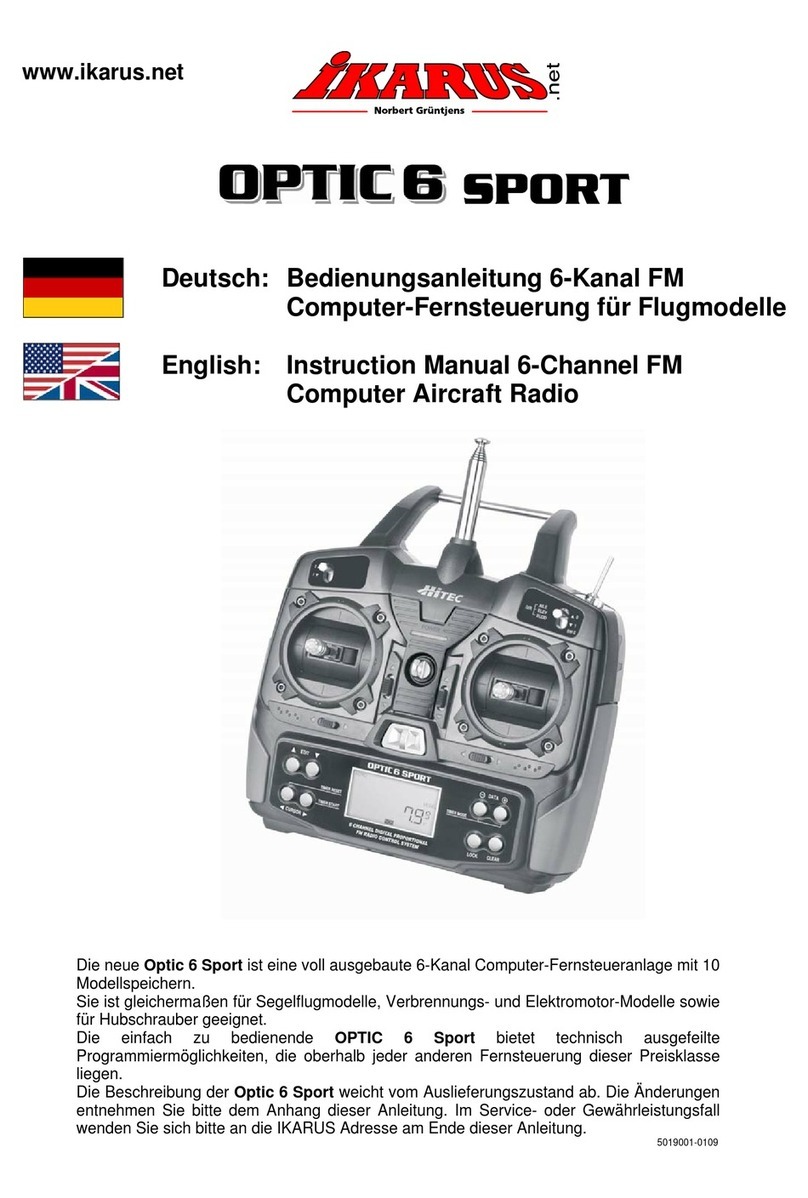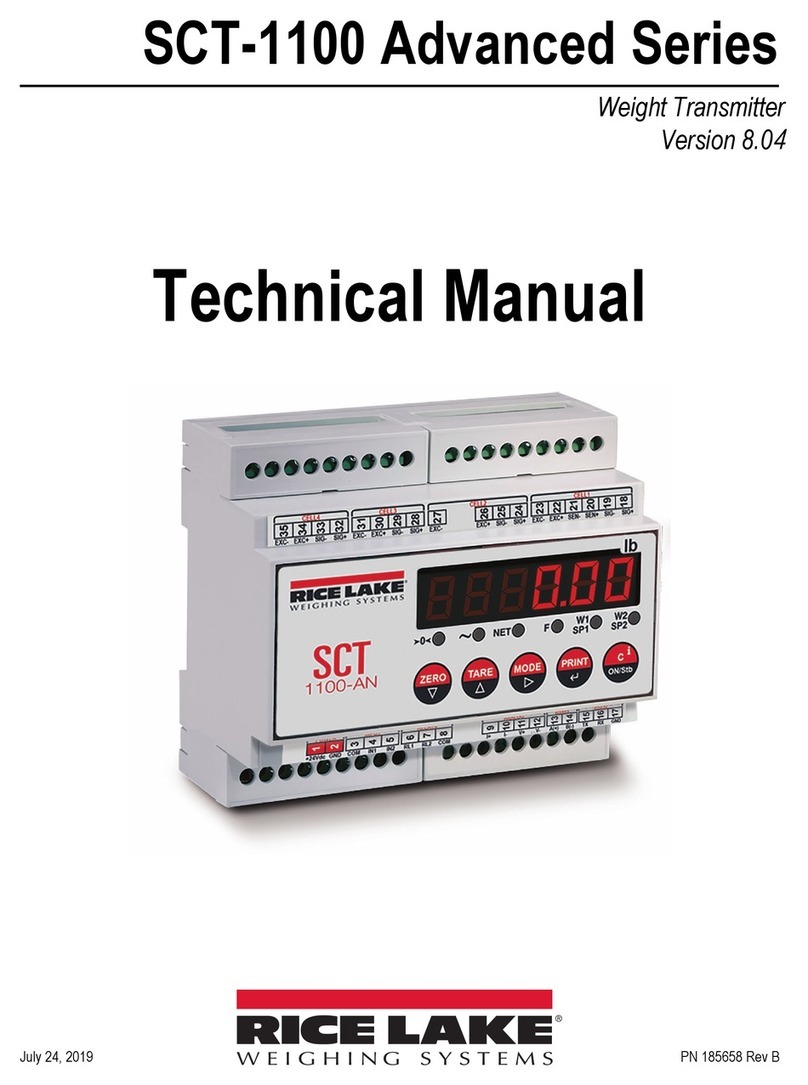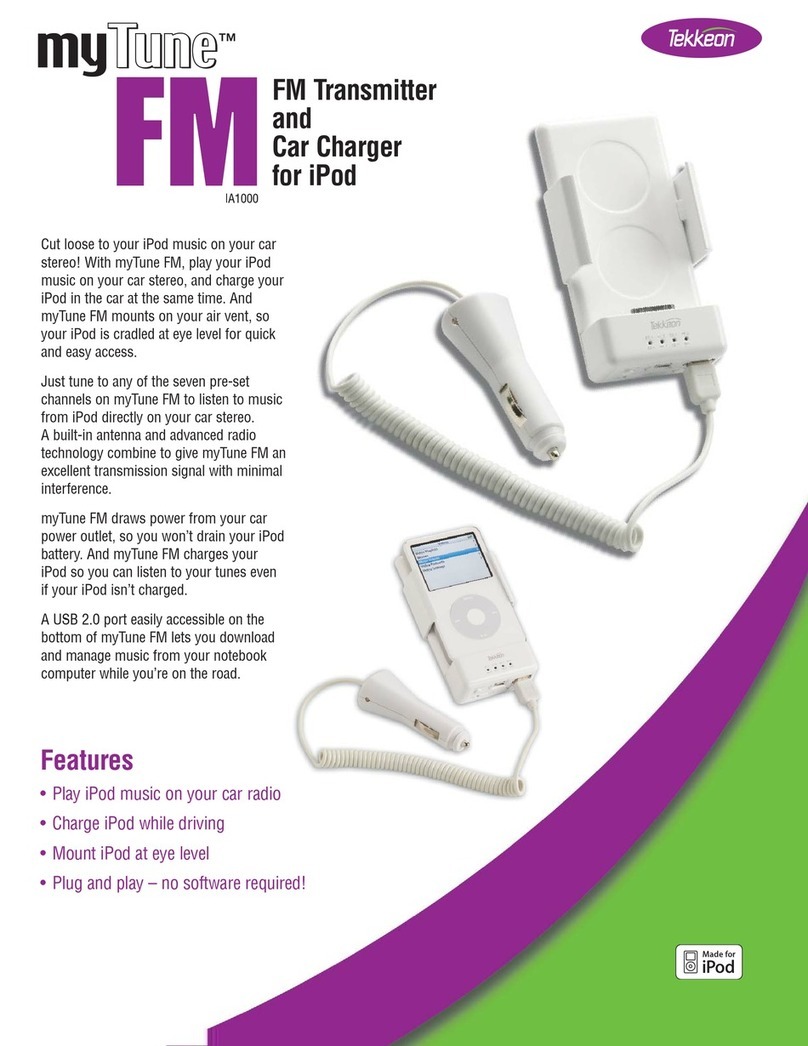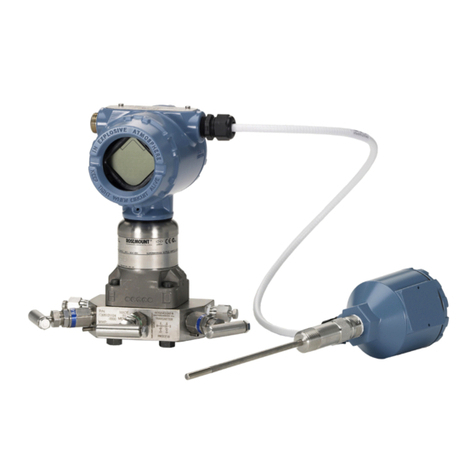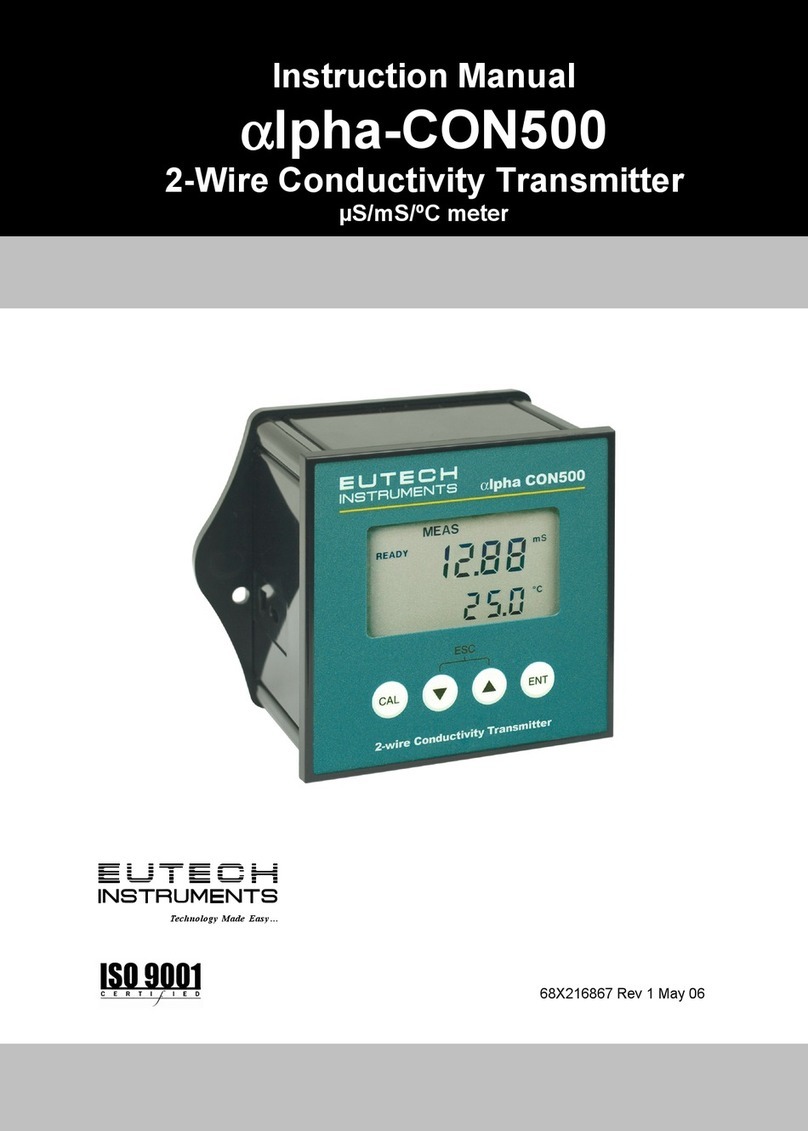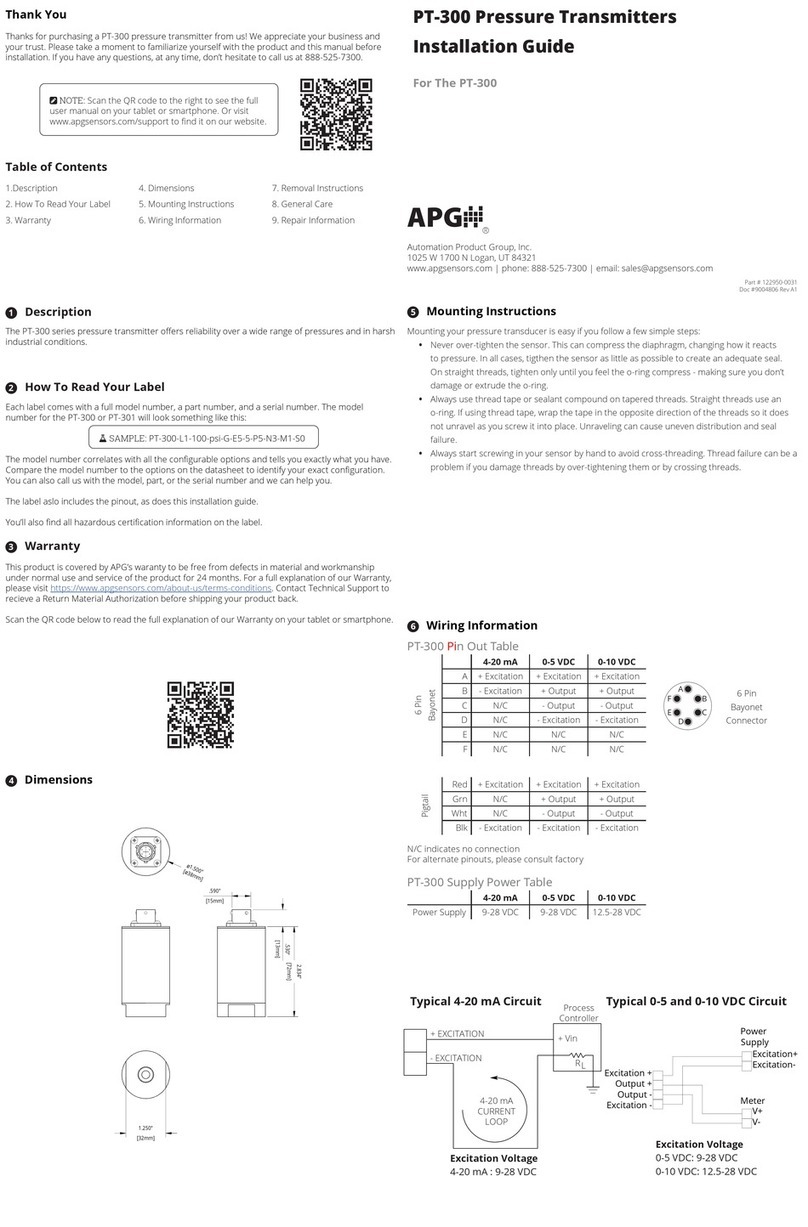SILENTRON 5150 User manual

1
COPYRIGHT SILENTRON DFV.PHONEnewXA090616GM
SILENTRON - Made I n Italy
5150 VOCALPHONE 2 WAY
5151 VOCALPHONE PSTN
5152 VOCALPHONE GSM
5590 VOCALPHONE 2 WAY-R
TRASMETTITORI TELEFONICI AUTOMATICI
Dichiarazione di conformità CE : il sottoscritto, in qualità di Amministratore Delegato della società scrivente, dichiara sotto la propria responsabilità che i prodotti descritti nel presente
manuale sono conformi ai requisiti stabiliti dalle Direttive e relative Norme e/o specifiche tecniche che seguono:
1) Direttiva CE 1999/5/CE - R&TTE - del 9 marzo 1999 (in Italia D.L. 9/05/2001 n. 269) riguardante le apparecchiature radio, le apparecchiature terminali di telecomunicazione e il reciproco
riconoscimento della loro conformità. Le Norme e/o specifiche tecniche applicate sono le seguenti:
- LVD e protezione della salute (art. 3(1)(a)): EN 60950-1 (2006-04), EN 50371 (2002-03)
- EMC (art. 3(1)(b)): EN 301 489-1 V1.8.1 (2008-04), EN 301 489-3 V1.4.1 (2002-08), EN 301 489-7 V1.3.1 (2005-11)
- Spettro radio (art. 3(2)): EN 300 220-1 V2.1.1 (2006-04), EN 300 220-2 V2.1.2 (2007-06)
In accordo alla direttiva citata, allegato IV, il prodotto risulta di classe 2 pertanto può essere commercializzato e messo in servizio senza limitazioni.
2) Direttiva CE 2004/108 del 15 dicembre 2004, per il riavvicinamento delle legislazioni degli Stati membri relative alla compatibilità elettromagnetica. Le Norme e/o specifiche tecniche
applicate sono le seguenti: EN 50130-4 (1995-12) + A1 (1998-04) + A2 (2003-01) - EN 55024 (1998-09) +A1 (2001-10) + A2 (2003-01) - EN 301489-1 V1.8.1 (2008-04) - EN 301489-3 V. 1.4.1
(2002-08) - EN 301489-7 V1.3.1 (2005-11)
3) Direttiva CE 2006/95 del 12 dicembre 2006, per il riavvicinamento delle legislazioni degli Stati membri relative al materiale elettrico destinato ad essere adoperato entro taluni limiti di
tensione. E' applicata la Norma EN 60950-1 (2006-049).
AVVERTENZE GENERALI - da rispettare con attenzione utilizzando i prodotti del presente manuale (ove applicabili)
Leggere attentamente prima di operare sulle apparecchiature
Installazione: tutte le operazioni di installazione, manutenzione e/o modifica delle presenti centrali e loro apparecchiature accessorie devono essere effettuate da personale tecnico qualificato.
Tali operazioni possono essere soggette a ulteriori norme tecniche specifiche che devono essere rispettate. L'apparecchiatura è prevista per essere utilizzata esclusivamente all’interno di
immobili, protetta da esposizioni ad elevate o bassissime temperature nonché da manipolazioni da parte di bambini e/o persone prive del buon senso comune ai sensi del C.C.
Collegamenti elettrici: ogni collegamento elettrico senza eccezioni deve essere effettuato a regola d’arte fissando tutti i fili come previsto onde evitarne il distacco accidentale e chiudendo
correttamente i contenitori e le protezioni degli apparecchi. E' fatto obbligo di scollegare tutti i collegamenti elettrici superiori a 25V sia CC che CA prima di aprire contenitori di apparecchi in
funzione.
Alimentazione esterna: 230V CA 50 Hz - collegarsi attraverso un sezionatore bipolare o meglio, una spina normalizzata estraibile.
Batterie ricaricabili e/o pile di qualunque tipo: questi apparecchi utilizzano batterie o pile, le quali sono potenzialmente dannose in quanto inquinanti, quindi pericolose per la salute pubblica.
Sostituire le batterie e/o pile esclusivamente con modelli equivalenti, collocarle e collegarle rispettando la polarità indicata nelle istruzioni. E’ obbligatorio smaltire quelle esauste secondo le
Norme vigenti, anche nel caso di rottamazione degli apparecchi, dai quali dovranno essere preventivamente estratte, restituendole al venditore degli apparecchi oppure depositandole negli
appositi contenitori messi a disposizione dalla rete distributiva. In caso di fuoriuscita di liquido da pile o batterie proteggere le mani con guanti al silicone onde evitare lesioni.
Responsabilità: il fabbricante declina ogni responsabilità conseguente a errata installazione e/o manutenzione, errato uso e/o mancato uso degli apparecchi forniti.
Garanzia in Italia:
1) presenza di vizi occulti: la garanzia è prestata nei termini previsti dal Codice Civile, in particolare dagli art. 1490, 1492, 1495 C.C.
2) buon funzionamento: la garanzia è prestata ai sensi dell'articolo 1512 del Codice Civile per un periodo di circa 3 anni dalla data di produzione; fa fede la data di scadenza scritta su apposita
etichetta interna all'apparecchiatura. Anche ove il prodotto sia fornito completo di batteria o pila, quest'ultima va considerata "accessorio gratuito soggetto a consumo" non coperto da garanzia.
3) la garanzia al privato consumatore (D.Lgs.2-2-02 n.24) deve essere fornita dall'ultimo venditore del prodotto a termini di legge.
Copyright : tutti i diritti relativi al presente manuale sono di proprietà Silentron s.p.a. E' espressamente vietata la riproduzione parziale o totale dei testi e delle immagini qui riportate, così come
l'inserimento in rete W.E.B. e/o la diffusione pubblica con qualunque mezzo.
Conformità normativa: oltre a quanto descritto nella dichiarazione di conformità, si aggiunge
- Prodotto conforme alla norma EN 50131-1 - Classe ambientale 2 - Prodotto di categoria I secondo la Norma 300.220 - 1 (04/2006)
1) INTRODUZIONE AI DIFFERENTI MODELLI DI APPARECCHIO
Il presente manuale riguarda una famiglia di prodotti simili. La differenza fra loro consiste nell’avere montati o meno alcuni componenti:ne
conseguono funzioni diverse. Le descrizioni che seguono permettono di comprendere le caratteristiche di ogni apparecchio e relative funzioni:
le istruzioni di programmazione ed utilizzo sono riferite al modello più completo: utilizzando altri modelli le funzioni non previste non appaiono
sul menù di programmazione.
2) 5150 VOCALPHONE 2 way GSM+PSTN (modello più completo)
Trasmettitore telefonico automatico bidirezionale, complementare a sistemi di allarme di tutte le marche, operante in alternativa programmabile
sia su rete fissa PSTN che GSM, con possibilità di comando automatismi via cavo, comunicazione a viva voce e teleascolto ambientale.
Caratteristiche:
Alimentazione: 12V CC - batteria tampone opzionale ricaricabile 6V 1,2Ah - Assorbimento : 50 mA in stand-by, 300 mA in comunicazione
Autonomia: oltre 18 ore con batteria carica, in assenza di alimentazione primaria. In questo caso, dopo l'invio del messaggio relativo, il
modulo GSM viene spento per ridurre i consumi: si riaccende per trasmissioni di allarme ed al ritorno dell'alimentazione.
Rubrica: fino a 63 numeri telefonici programmabili - 16 cifre per ogni numero - più un numero telefonico programmabile, posizione 64,
riservato alla richiesta del credito residuo della SIM.
Messaggi vocali: registrazione diretta sull'apparecchio di 4 messaggi di allarme più un messaggio automatico di "batteria interna scarica"
(n.5), più un messaggio di risposta su chiamata (n.6), per guidare l'utente nelle operazioni a distanza - 120 secondi totali di registrazione.
Messaggi SMS : scrittura diretta sull'apparecchio di 4 messaggi di allarme più 7 SMS precompilati con invio automatico per segnalazioni
tecniche dell'apparecchio (vedere 8.3).
Protocolli digitali: l'apparecchio opera anche con protocollo Contact Id e Cesa 200 Baud, per comunicazioni digitali alla vigilanza.
Associazione messaggi/numeri: ogni numero telefonico può essere associato ad uno o più messaggi secondo le esigenze specifiche.

2
COPYRIGHT SILENTRON DFV.PHONEnewXA090616GM
SILENTRON - Made I n Italy
Comando messaggi via filo: 4 ingressi NC, uno per ogni messaggio di allarme. Due di questi vincolati tramite apposito ingresso di blocco.
Uscite a relè per comando carichi: n.2 relè attivabili in modo bistabile e controllabili via rete GSM chiamando la centrale.
Uscita guasto: segnale negativo per mancanza campo GSM per oltre 15 minuti.
Memoria eventi: l'apparecchio registra gli ultimi 200 eventi, visibili sul display richiamando il programma relativo.
Codici di accesso: sono previsti un codice utente (per uso funzioni) ed uno installatore (per la programmazione), diversi fra loro.
Programmazione: semplice ed intuitiva, supportata da guida vocale in tempo reale.
3) 5152 VOCALPHONE GSM
Trasmettitore telefonico automatico bidirezionale, complementare a sistemi di allarme di tutte le marche, operante solo su rete GSM, con
possibilità di comando automatismi via cavo, comunicazione a viva voce e teleascolto ambientale.
Caratteristiche come precedente, salvo le seguenti varianti:
Messaggi SMS : scrittura diretta sull'apparecchio di 4 messaggi di allarme più 6 SMS precompilati con invio automatico per segnalazioni
tecniche dell'apparecchio (vedere 8.3).
4) 5151 VOCALPHONE PSTN
Trasmettitore telefonico automatico con teleascolto ambientale, operante solo su rete fissa PSTN e compatibile con tutte le centrali.
Caratteristiche come precedente, salvo le seguenti varianti:
Alimentazione: 12V CC - batteria tampone opzionale ricaricabile 6V 1,2Ah - Assorbimento : 10 mA in stand-by, 150 mA in comunicazione
Autonomia: circa 100 ore con batteria carica, in assenza di alimentazione primaria.
Rubrica: fino a 64 numeri telefonici programmabili - 16 cifre per ogni numero
Messaggi vocali: registrazione diretta sull'apparecchio di 4 messaggi di allarme più un messaggio automatico di "batteria interna scarica" -
120 secondi totali di registrazione.
Messaggi SMS - Uscite a relè per comando carichi - Uscita guasto : funzioni non presenti.
5) 5590 VOCALPHONE 2wayR - wireless PSTN+GSM (modello senza fili dotato di propria alimentazione a pile)
Trasmettitore telefonico automatico operante sia su rete fissa PSTN che GSM, con possibilità di comunicazione a viva voce e teleascolto
ambientale. L'apparecchio è comandato da trasmettitori via radio Silentron di ogni tipo.
Caratteristiche come 5150, salvo le seguenti varianti:
Alimentazione: 6V CC tramite pack 4 pile alcaline size D - Assorbimento : 220 µA in stand-by, 300 mA in comunicazione
Autonomia: circa 2 anni con 10 chiamate per anno
Messaggi vocali: registrazione diretta sull'apparecchio di 4 messaggi di allarme più un messaggio automatico di "batteria interna scarica" -
120 secondi totali di registrazione.
Messaggi SMS : scrittura diretta sull'apparecchio di 4 messaggi di allarme più 6 SMS precompilati con invio automatico per segnalazioni
tecniche dell'apparecchio (vedere 8.3).
Comando messaggi via radio: 99 trasmettitori suddivisibili liberamente sui 4 messaggi di allarme.
Uscite a relè per comando carichi- Uscita guasto : funzioni non presenti.
6) FUNZIONAMENTO DEGLI APPARECCHI - INFORMAZIONI PER L'UTENTE
Tenuto conto che alcuni modelli non contemplano tutte le funzioni come sopra descritto, gli apparecchi funzionano come segue:
6.1) CHIAMATE DI ALLARME/SOCCORSO
L'apparecchio a riposo evidenzia il campo GSM nei modelli che dispongono della funzione e la scritta CONNESSIONE in caso di allarme.
A seguito di un comando elettrico o via radio su uno dei 4 messaggi, l'apparecchio chiama tutti i numeri telefonici in rubrica abbinati al
messaggio attivato. Ciò avviene su rete fissa PSTN oppure su rete GSM secondo i modelli e la programmazione prioritaria effettuata.
Alla risposta del chiamato il messaggio viene ripetuto due volte. Se il chiamato è occupato o assente la chiamata viene ripetuta dopo 3 minuti e
così via per altre due volte. In caso di programmazione senza controllo di linea il messaggio è ripetuto 4 volte (vedere 8.3).
Per interrompere le chiamate successive ad altri utenti può premere il tasto #sul proprio telefono dopo il beep di fine messaggio: l'apparecchio
cesserà le chiamate. Per ascoltare i rumori ambientali tramite l'apparecchio può premere il tasto ∗sul proprio telefono dopo il beep di fine
messaggio. Il relativo messaggio SMS viene comunque inviato a tutti i numeri telefonici in rubrica abbinati al messaggio attivato.
6.2 COMANDO DI CARICHI VIA TELEFONO (SOLO MODELLI 5150 - 5152)
Chiamata al modulo GSM di bordo: esso è sempre abilitato a rispondere alle chiamate entranti: occorre ascoltare il messaggio di istruzioni,
attenderne la fine poi digitare codice utente seguito da # (se il chiamante ha accesso diretto non occorre digitare il CODICE UTENTE )
Comandi delle attuazioni possibili, con segnale sonoro ad ogni tasto premuto:
- digitando ∗si accede alla funzione "vivavoce" che consente l'ascolto ed il dialogo.
- digitando 1 ∗1 # attiva il relè 1, che si disattiva digitando 1 ∗0 #
- digitando 2 ∗1 # attiva il relè 1, che si disattiva digitando 2 ∗0 #
- digitando 1 (2) # si controlla lo stato del relè 1 (2): l'apparecchio risponde con 3 beep se il relè è attivato, con uno se il relè è disattivato.
6.3 ACCESSO AL FILE STORICO (MEMORIA EVENTI)
L’accesso al file storico avviene digitando il codice installatore/utente seguito dal tasto ↓. Il file storico riporta data, ora, nome del chiamato ed
esito della chiamata (OK: chiamata a buon fine, NO: mancata risposta, OC: occupato) delle ultime 200 chiamate, evidenziando eventuale
mancanza campo GSM, mancanza linea tradizionale, avvenuta modifica da remoto etc. Inoltre è riportata anche l’indicazione di telefonata
uscente (←) o entrante (→) e l’indicazione del tipo di chiamata o SMS (S) o Vocale (V).
Si ritorna in condizione di stand-by tramite tasto ESC, oppure automaticamente dopo 1 minuto senza operazioni.
6.4 VARIAZIONE A DISTANZA DEI NUMERI TELEFONICI (SOLO MODELLI 5150 - 5152)
Tramite un SMS da GSM remoto è possibile variare i numeri telefonici residenti nella rubrica; il numero del telefono remoto deve essere
memorizzato sul sistema con funzione di accesso diretto “Y” (yes). Comporre un messaggio come segue (neretto):
A333555666 (vecchio numero da sostituire) A333666888 (nuovo numero da inserire)
L’apparecchio memorizza la variazione ed invia SMS di conferma: VARIAZIONE AVVENUTA *333666888*
6.6 BLOCCO CHIAMATE SULL’APPARECCHIO: digitando il codice utente seguito da “ CANC” si bloccano le chiamate in corso.

3
COPYRIGHT SILENTRON DFV.PHONEnewXA090616GM
SILENTRON - Made I n Italy
6.7 RICHIESTA DEL CREDITO RESIDUO SIM (SOLO MODELLI 5150 - 5152)
Premendo il pulsante ↵per 2 secondi si ottiene la chiamata automatica al gestore per l'informazione sul credito residuo della SIM, che si ascolta
direttamente dall'apparecchio. Solo per l'Italia e solo con gestori TIM, Vodafone e Wind è possibile ottenere tale credito a distanza, inviando un
SMS con solo un punto interrogativo " ? " al trasmettitore: questi procederà ad interrogare il gestore, che risponderà con un SMS direttamente al
telefono chiamante. Attenzione: questo deve essere programmato con accesso diretto Y.
7) MESSA IN OPERA
Ogni trasmettitore telefonico va installato opportunamente occultato ove utilizzato in sistemi di allarme. E' necessario verificare la presenza di
campo GSM nei modelli con tale funzione prima di fissare l'apparecchio al muro, ponendo un altro telefono cellulare che utilizza lo stesso
gestore nel luogo esatto ove si intende fissare l'apparecchio.
Abilitazione SIM: per i modelli con GSM occorre eliminare il codice PIN oppure sostituirlo con i numeri 1,2,3,4; abilitare la SIM prima di
utilizzarla negli apparecchi ed accertarsi che essa abbia un minimo di credito residuo: una SIM non abilitata, guasta o assente non consente il
funzionamento dell'apparecchio. Attenzione! Introdurre la SIM ad apparecchiatura NON ALIMENTATA !
Collegamenti elettrici: effettuare i collegamenti elettrici richiesti dall'apparecchio (vedere disegno) considerando il funzionamento delle
connessioni IN-OUT. Gli ingressi di comando devono essere chiusi su GND (negativo) ed attivano la trasmissione aprendosi. Gli ingressi di
blocco chiusi a POSITIVO bloccano la trasmissione telefonica. I due morsetti TAMPER costituiscono un circuito chiuso quando il box è
interamente chiuso (protezione antiapertura del coperchio ed antirimozione sul fondo). L'uscita +OUT è "open collector" e chiude a GND per 15
secondi dopo una assenza di campo GSM per 15 minuti (solo modelli 5150-5152).
Le uscite relè, presenti soltanto sui modelli 5150-5152, presentano un contatto in scambio libero da potenziale con portata massima 500mA a
12V CC. I relè funzionano in modo bistabile su chiamata all'apparecchio (vedere
ATTENZIONE ! Gli apparecchi 5150-5151-5152 funzionano a 12V CC con eventuale batteria tampone 6V 1,2 Ah Il collegamento a
tensioni diverse e/o il collegamento a batterie diverse danneggiano l'apparecchio irrimediabilmente, con perdita della garanzia.
Il modello 5590 funziona a 6V CC con 4 pile alcaline tipo D (torcia). Disponibile su richiesta un modello con alimentatore.
ATTENZIONE ! Fra centrale (qualunque tipo) e Vocalphone la massa (GND - polo negativo) deve essere comune.
8) PROGRAMMAZIONE - Da effettuarsi con apparecchio alimentato correttamente.
Tutti gli apparecchi sono di semplice programmazione e dispongono di guida vocale per le varie funzioni da programmare, pertanto
evidenziamo qui di seguito soltanto alcuni aspetti relativi a funzioni particolari, che richiedono scelte appropriate.
8.1) FUNZIONI DEI TASTI: PER PROGRAMMAZIONE PER SCRITTURA SMS E NUMERI TELEFONICI
impostazione numeri e scrittura messaggi SMS
scorrimento delle righe del menu’ e selezione parametri punto
cancellazione ultimo carattere selezionato spazio
selezione di un menù e/o conferma di una selezione
uscita dal menù / sottomenù selezionato asterisco
cancellazione di una programmazione effettuata pausa fra numeri
8.2) OPERAZIONI DI PROGRAMMAZIONE DELL’APPARECCHIO
3635 A
Appare il numero del firmware
dell'apparecchio. Premere ↵,
scegliere la lingua usando ↑↓
e procedere . . .
↵CODICE FABBRICA
0 0 0 0 ↵INSERIRE ORA
10 , 15
↵
INSERIRE DATA
13 / 02 / 09
(DD / MM / YY)
↵CODICE UTENTE
_ _ _ _
Inserire un codice di 4-8 cifre
diverso da 0000 : questo servirà
per gli interventi dell'utente
↵COD. INSTALLATORE
_ _ _ _
Inserire un codice diverso
dal precedente e da 0000.
Esso consente l'accesso
alla programmazione
↵Ora l'apparecchio è pronto per la programmazione: proseguire seguendo la guida vocale,
spostandosi nei menù e concludendo sempre con ↵qualunque operazione da confermare.
RUBRICA ↑
↵CONFERMA ↓
Memorizzazione, richiamo e
cancellazione dei numeri
telefonici e relativi nomi
MESSAGGI ↑
↵CONFERMA ↓
Registrazione messaggi vocali
e scrittura sms
STRUMENTI ↑
↵CONFERMA ↓
Programmazione dei comandi
via filo e/o di quelli via radio;
scrittura e registrazione delle
etichette
IMPOSTAZIONI ↑
↵CONFERMA ↓
Impostazione di particolari funzioni
e/o controlli dell'apparecchio
PROTOCOLLI DIGITALI ↑
↵CONFERMA ↓
Impostazione del protocollo di
trasmissione allarmi alla
vigilanza.
(chiedere supporto Silentron)

4
COPYRIGHT SILENTRON DFV.PHONEnewXA090616GM
SILENTRON - Made I n Italy
8.3) Aspetti particolari dei vari menù :
RUBRICA controllo linea PSTN: anteporre ∗ai numeri telefonici in programmazione nel caso di linea molto disturbata: le
chiamate partiranno senza controllo del tono di linea ed i messaggi saranno ripetuti 4 volte.
accesso diretto Y/N: usare ↑↓ per consentire (Y) o meno l'accesso al COMANDO CARICHI (6.2) dell'apparecchio
senza digitare il codice utente (riconoscimento del numero chiamante).
abbinamento SMS tecnici: SMS 1: batteria combinatore scarica mod. 5150 - 5152 - 5590
SMS 2: batteria centrale e / o periferiche scarica mod. 5590
SMS 3: mancanza 12V mod. 5150 - 5152
SMS 4: mancanza copertura GSM per più di 15 min. mod. 5150 - 5152 - 5590
SMS 5: nessuna chiamata a buon fine su linea PSTN mod. 5150 - 5590
SMS 6: chiamata periodica (esistenza in vita) mod. 5150 - 5152 - 5590
SMS 7: scadenza SIM mod. 5150 - 5152 - 5590
SMS 8: ripristino 12V conseguente al msg. 3
posizione 64: in questa posizione, richiamabile attraverso i tasti ↑↓ occorre programmare il numero previsto
dal gestore SIM per la richiesta del credito residuo, onde consentire all'utente di avere
l'informazione in modo automatico (vedere 6.7)
MESSAGGI registrazione: parlare a voce alta vicino al microfono, scandendo bene le parole Si consiglia di preparare il
testo scritto dei vari messaggi, che devono essere adeguati alla funzione specifica.
STRUMENTI etichette scritte/vocali: esse sono utilissime all'utente per individuare il più esattamente possibile il motivo dell'allarme
quando l'apparecchio chiama, per cui devono essere previste nel modo più chiaro possibile.
comandi via radio (5590): per programmare tali comandi occorrono operazioni diverse secondo il TX usato:
Centrali: predisporre Vocalphone poi inserire/disinserire la centrale alimentata
Telecomandi: predisporre Vocalphone poi premere il tasto giallo per 10 sec, e verificare l’apprendimento:
premendo il tasto parte il messaggio abbinato, che si blocca solo digitando il codice utente.
Rivelatori e sensori: predisporre Vocalphone, inserire la pila nel rivelatore e verificare l’apprendimento.
Confermaresemprecon↵per memorizzare il codice radio impostato.
IMPOSTAZIONI attivazione funzioni: alcune funzioni vanno appositamente attivate usando ↑↓ per commutare N=no in Y=si
cancellazione: la sua conferma elimina tutte le programmazioni effettuate.
PROTOCOLLI DIGITALI per questa programmazione si rimanda al manuale apposito oppure direttamente al supporto
ÉMETTEURS TÉLÉPHONIQUES AUTOMATIQUES
Déclaration de Conformité: le soussigné P.D.G. déclare, sous sa propre responsabilité, que les produits de ce notice sont conformes à ce que prévoient les Directives Communautaires
suivantes:
1) Directive CE 1999/5/CE - R&TTE - du 9 mars 1999 concernant les appareillages radio et les appareillages terminaux de télécommunication et la reconnaissance réciproque de leur
conformité. Les normes appliqués sont les suivantes:
- Protection de la santé: (art. 3(1)(a)): EN 60950-1 (2006-04), EN 50371 (2002-03)
- EMC (art. 3(1)(b)): EN 301 489-1 V1.8.1 (2008-04), EN 301 489-3 V1.4.1 (2002-08), EN 301 489-7 V1.3.1 (2005-11)
- Émission radio (art. 3(2)): EN 300 220-1 V2.1.1 (2006-04), EN 300 220-2 V2.1.2 (2007-06)
Selon ces directives, joint IV, les produits sont de la classe 2 et peuvent être mis en commerce et utilisés sans limitations.
2) Directive CE 2004/108/CE du 15 décembre 2004, pour le rapprochement des législations des États membres relatives à la compatibilité électromagnétique. Les normes appliquées sont les
suivantes: EN 50130-4 (1995-12) + A1 (1998-04) + A2 (2003-01) - EN 55024 (1998-09) +A1 (2001-10) + A2 (2003-01) - EN 301489-1 V1.8.1 (2008-04) - EN 301489-3 V. 1.4.1 (2002-08) - EN
301489-7 V1.3.1 (2005-11)
3) Directive 2006/95/CE du 12 décembre 2006, pour le rapprochement des législations des États membres relatives au matériel électrique destiné à être utilisé entre certaines limites de
tension. Est appliqué la norme EN 60950-1 (2006-049)
AVERTISSEMENTS GENERAUX – à respecter avec attention en utilisant les produits du présent manuel (ou applicables)
Lire attentivement avant d'intervenir sur les appareils
Installation: toutes les opérations d'installation, d'entretien et/ou de modification du système et de ses appareils doivent être effectuées par un personnel technique qualifié.
Ces opérations peuvent être sujettes à des normes techniques spécifiques qui doivent être respectées.
L'appareillage est prévu pour être utilisé exclusivement à l'intérieur d'immeubles, protégé des températures trop élevées ou trop basses ainsi que des manipulations par des enfants et/ou
personnes privées du bon sens commun aux termes du C.C.
Branchements électriques: tout branchement électrique -et ceci sans aucune exception- doit être effectué selon les normes en fixant tous les fils comme prévu afin d'en éviter l'arrachement
accidentel, et en prenant soin de refermer les boîtiers et les protections des appareils.
Il est obligatoire de défaire tous les branchements électriques supérieurs à 25V tant en CC qu'en CA avant d'ouvrir les boîtiers des appareils en fonction.
Alimentation extérieure: 230V CA 50 Hz - se connecter à travers un sectionneur bipolaire ou mieux encore à travers une fiche normalisée extractible.
Batteries rechargeables et/ou piles de n’importe quel type : ces appareils utilisent des batteries ou des piles qui sont potentiellement nuisibles en tant qu’élément polluant, et par
conséquent dangereuses pour la santé publique. Substituer les batteries et/ou les piles exclusivement avec des modèles équivalents, les placer en respectant la polarité indiquée sur le mode
d’emploi. Il est obligatoire d’éliminer celles usées selon les Normes en vigueur, également en cas de démolition des appareils, desquels elles devront être auparavant extraites en les restituant
au vendeur de l’appareil ou bien en les déposant dans les conteneurs spécifiques mis à la disposition par le réseau de distribution. En cas de déversement du liquide des piles ou des batteries
se protéger les mains avec des gants au silicone afin d’éviter des blessures.
Responsabilité: le fabricant décline toute responsabilité dérivant d'une installation erronée et/ou d'un entretien, d'une mauvaise utilisation et/ou d'un manquement à l’utilisation des appareils
fournis.
Garantie: la garantie est valable jusqu'à son échéance mentionnée sur l'étiquette contenue dans l'appareillage, dans les limites prévues par la Convention de Vienne de 1980 sur la Vente
Internationale des Marchandises.
Copyright : tous les droits relatifs au présent manuel sont réservés à Silentron s.p.a. La reproduction partielle ou totale des textes et des images ici contenus est expressément interdite, tout
comme l'insertion sur le réseau W.E.B. et/ou la diffusion publique de toute nature.
Conformité normative: en plus à celui indiqué dans la déclaration de conformité on précise :
Produit conforme à la norme EN 50131-1- Classe ambiant 2 – Produit de catégorie I selon la Norme 300.220-1 (04/2006)
1) INTRODUCTION SUR LES DIFFÉRENTS MODÈLES D'APPAREIL
Le manuel concerne une famille de produits semblables. Ils se différencient entre eux par le fait d'être équipés ou non de certains composants:
il en découle qu'ils possèdent des fonctions différentes. Les descriptions suivantes permettent de comprendre les caractéristiques de chaque
appareil et les fonctions correspondantes: les instructions de programmation et d'utilisation se réfèrent au modèle le plus complet: si vous
utilisez d'autres modèles, les fonctions non prévues n'apparaissent pas sur le menu de programmation.

5
COPYRIGHT SILENTRON DFV.PHONEnewXA090616GM
SILENTRON - Made I n Italy
2) 5150 VOCALPHONE 2 way GSM+PSTN (modèle le plus complet)
Émetteur téléphonique automatique bidirectionnel, complémentaire aux systèmes d'alarme de toutes les marques, programmable soit sur
réseau fixe RTC soit GSM, avec possibilité de commande d'automatismes par câble, communication vocale et télé-écoute d'ambiance.
Caractéristiques:
Alimentation: 12V CC - en option batterie tampon rechargeable 6V 1,2Ah - Absorption: 50 mA en stand-by, 300 mA en communication
Autonomie: plus de 18 heures avec batterie chargée, en l'absence d'alimentation primaire. Dans ce cas, après l'envoi du message
correspondant, le module GSM s'éteint pour diminuer le consommation: il se rallume en cas d'alarme et au retour de l'alimentation.
Répertoire: jusqu'à 63 numéros de téléphone programmables - 16 chiffres pour chaque numéro - plus un numéro de téléphone
programmable, position 64, réservé à la demande du crédit résiduel de la SIM (p.ex. BOUYGUES = 630 – SFR = 950).
Messages vocaux: enregistrement direct sur l'appareil de 4 messages d'alarme plus un message automatique de "pile interne déchargée"
(n.5), plus un message de réponse sur appel, pour guider l'utilisateur dans les opérations à distance (n.6) - 120 secondes au total
d'enregistrement.
Messages SMS : écriture directe sur l'appareil de 4 messages d'alarme plus 7 SMS pré-remplis avec envoi automatique pour signalisations
techniques de l'appareil (voir 8.3.).
Protocoles numériques: l'appareil fonctionne avec protocole Contact Id et Cesa 200 Baud, pour communications à la surveillance.
Association messages/numéros: chaque numéro de téléphone peut être associé à un ou plusieurs messages selon les exigences.
Commande messages par fil: 4 entrées NC, une pour chaque message d'alarme. Deux de celles-ci disposent d'une entrée de blocage.
Sorties à relais pour commande charges: n. 2 relais activables en mode bistable et contrôlable par réseau GSM appelant la centrale.
Sortie panne: signal négatif pour absence de champ GSM pendant plus de 15 minutes.
Mémoire événements: l'appareil enregistre les 200 derniers évènements, visibles sur l'afficheur en rappelant le programme correspondant.
Codes d'accès: un code utilisateur (pour l'usager) et un code installateur (pour la programmation), différents entre eux, sont prévus.
Programmation: simple et intuitive, supportée par guide vocal en temps réel.
3) 5152 VOCALPHONE GSM
Émetteur téléphonique automatique bidirectionnel, complémentaire aux systèmes d'alarme de toutes les marques, fonctionnant uniquement sur
réseau GSM, avec possibilité de commande d'automatismes par câble, communication vocale et télé-écoute d'ambiance.
Caractéristiques identiques à l'appareil précédent, sauf pour les variantes suivantes:
Répertoire: jusqu'à 64 numéros de téléphone programmables - 16 chiffres pour chaque numéro.
Messages SMS : écriture directe sur l'appareil de 4 messages d'alarme plus 6 SMS pré-remplis avec envoi automatique pour signalisations
techniques de l'appareil (voir 8.3.).
4) 5151 VOCALPHONE PSTN (RTC)
Émetteur téléphonique automatique avec télé-écoute d'ambiance, fonctionnant sur réseau RTC et compatible avec toutes les centrales.
Caractéristiques identiques à l'appareil précédent, sauf pour les variantes suivantes:
Alimentation: 12V CC - en option batterie tampon rechargeable 6V 1,2Ah - Absorption: 10 mA en stand-by, 150 mA en communication
Autonomie: environ 100 heures avec batterie chargée, en l'absence d'alimentation primaire.
Messages SMS : aucun
Sorties à relais pour commande charges: aucune.
5) 5590 VOCALPHONE 2wayR - wireless PSTN (RTC)+GSM (modèle sans fils doté de sa propre alimentation par pile)
Émetteur téléphonique automatique, fonctionnant tant sur réseau fixe RTC que GSM, avec possibilité de commande d'automatismes par radio,
communication vocale et télé-écoute d'ambiance. L'appareil est commandé par émetteurs radio Silentron de tous les types.
Caractéristiques comme le modèle 5150, sauf pour les variantes suivantes:
Alimentation: 6V CC par pack 4 piles alcalines size D - Absorption: 220 µA en stand-by, 300 mA en communication
Autonomie: environ 2 ans avec 10 appels par an
Messages vocaux: enregistrement direct sur l'appareil de 4 messages d'alarme plus un message automatique de "batterie interne
déchargée" - 120 secondes au total d'enregistrement.
Messages SMS : écriture directe sur l'appareil de 4 messages d'alarme plus 6 SMS pré-remplis avec envoi automatique pour signalisations
techniques de l'appareil (voir 8.3.).
Commande messages par radio: 99 émetteurs qui peuvent être librement subdivisés sur les 4 messages d'alarme.
Sorties à relais pour commande charges: aucune.
6) FONCTIONNEMENT DES APPAREILS - INFORMATIONS POUR L'UTILISATEUR
Sans oublier que certains modèles n'envisagent pas toutes les fonctions décrites ci-dessus, les appareils fonctionnent de la façon suivante:
6.1) APPELS D'ALARME/SECOURS
L'appareil en repos montre le champ GSM sur les modèles qui disposent de la fonction et le texte CONNEXION en cas d'alarme.
Suite à une commande électrique ou via radio sur un des 4 messages, l'appareil appelle tous les numéros de téléphone en répertoire associés
au message activé. Ceci se produit sur réseau fixe RTC ou sur réseau GSM selon les modèles et la programmation prioritaire effectuée.
À la réponse du poste appelé, le message est répété deux fois. Si la personne appelée est occupée ou absente, l'appel est répété après 3
minutes et ainsi de suite pendant deux autres tentatives. En cas de programmation sans contrôle de ligne, le message est répété 4 fois (voir
8.3).
Pour interrompre les appels successifs à d'autres utilisateurs, on peut appuyer sur la touche #sur son propre téléphone après le beep de fin de
message: l'appareil cessera les appels. Pour écouter les bruits d'ambiance au moyen de l'appareil, on peut appuyer sur la touche ∗son propre
téléphone après le beep de fin de message. Le message SMS correspondant est cependant envoyé à tous les numéros de téléphone en
répertoire associés au message activé.
6.2 COMMANDE DE CHARGES PAR TELEPHONE (SEULEMENT MODELES 5150 - 5152)
Appel au module GSM de bord: il est toujours activé pour répondre aux appels entrants: il faut écouter le message d'instructions, en attendre
la fin ensuite introduire le code utilisateur suivi de # (si l'appel entrant a accès direct, il ne faut pas introduire le CODE UTILISATEUR)
Commandes des possibles actions, avec signal sonore à chaque touche enfoncée:
- en introduisant ∗, on accède à la fonction "haut-parleur" qui permet l'écoute et le dialogue.
- en introduisant 1 ∗1 # on active le relais 1, qui se désactivant en introduisant 1 ∗0 #
- en introduisant 2 ∗1 # on active le relais 1, qui se désactivant en introduisant 2 ∗0 #
- en introduisant 1 (2) # on contrôle l'état du relais 1 (2): l'appareil répond par 3 beeps si le relais est activé, par un si le relais est désactivé.

6
COPYRIGHT SILENTRON DFV.PHONEnewXA090616GM
SILENTRON - Made I n Italy
6.3 ACCES AU DOSSIER HISTORIQUE (LECTURE MÉMOIRE ÉVÈNEMENTS)
L’accès au dossier historique s'obtient en introduisant le code installateur/utilisateur suivi de la touche ↓. Le dossier historique reprend la date,
l'heure, le nom du poste appelé et le résultat de l'appel (OK: appel arrivé à bon port, NON: sans réponse, OC: occupé) des 200 derniers appels,
en soulignant une absence éventuelle de champ GSM, absence de ligne traditionnelle, une modification effectuée à distance, etc. Il reprend
aussi l'indication d'appel sortant (←) ou entrant (→) et l'indication du type d'appel ou SMS (S) ou Vocal (V).
On retourne en condition de stand-by en appuyant sur la touche ESC, ou automatiquement après 1 minute sans opérations.
6.4 MODIFICATION A DISTANCE DES NUMEROS DE TELEPHONE (SEULEMENT MODELES 5150 - 5152)
Au moyen d'un SMS depuis GSM à distance, il est possible de modifier les numéros de téléphone figurant dans le répertoire; le numéro du
téléphone à distance doit être mémorisé sur le système avec fonction d'accès direct “Y” (yes). Composer un message comme celui-ci (en
caractère gras):
A333555666 (ancien numéro à remplacer) A333666888 (nouveau numéro à insérer)
L'appareil mémorise la variation et envoie un SMS confirmatif: VARIATION EFFECTUÉE *333666888*
6.6 BLOCAGE DES APPELS: en introduisant le code utilisateur ou installateur suivi de "CANC", les appels en cours sont bloqués.
6.7 DEMANDE DU CRÉDIT RÉSIDUEL SIM (SEULEMENT MODELES 5150 - 5152)
En appuyant sur le bouton ↵pendant 2 secondes, on obtient l'appel automatique au gestionnaire pour information sur le crédit résiduel de la
SIM, qui s'écoute directement depuis l'appareil.
7) MISE EN SERVICE
Chaque émetteur téléphonique doit être installé de façon dissimulée s'il est utilisé dans des systèmes d'alarme. Il faut vérifier la présence de
champ GSM sur les modèles avec cette fonction avant de fixer l'appareil au mur, en situant un autre téléphone cellulaire qui utilise le même
gestionnaire dans le lieu exact où l'on a l'intention de fixer l'appareil.
Activation SIM: pour les modèles avec GSM, il faut éliminer le code PIN ou le remplacer par les numéros 1,2,3,4; activer la SIM avant de
l'utiliser dans les appareils et s'assurer qu'elle ait un minimum de crédit résiduel: une SIM non activée, en panne ou manquante ne permet pas
le fonctionnement de l'appareil. Attention! Introduire la SIM quand l'appareil N'EST PAS ALIMENTÉ!
Branchements électriques: effectuer les connexions électriques requises par l'appareil (voir dessin) en tenant compte du fonctionnement des
connexions IN-OUT. Les entrées de commande doivent être fermées sur GND (négatif) et elles donnent lieu à la transmission en s'ouvrant. Les
entrées de blocage fermées en POSITIF bloquent la transmission téléphonique. Les deux bornes TAMPER constituent un circuit fermé quand le
boîtier est entièrement fermé (protection contre l'ouverture du couvercle et l'enlèvement du fond). La sortie +OUT est "open collector" et ferme
sur GND pendant 15 secondes après une absence de champ GSM pendant 15 minutes (seulement modèles 5150-5152).
Les sorties relais, présentes seulement sur les modèles 5150-5152, présentent un contact en échange libre de potentiel avec un débit
maximum de 500mA à 12V CC. Les relais fonctionnent en mode bistable sur appel à l'appareil (voir
ATTENTION! Les appareils 5150-5151-5152 fonctionnent en 12V CC avec une éventuelle batterie tampon 6V 1,2 Ah. L'alimentation
doit être connectée avant de la batterie. La connexion à des tensions d'alimentation différentes et/ou à des batteries différentes
endommagent irrémédiablement l'appareil et entraînent la perte de la garantie.
Le mod. 5590 fonctionne en 6V CC, par 4 piles 1,5V type D - autonomie 1-2 ans, selon l'usage.
ATTENTION! Entre la centrale (n'importe quel type) et Vocalphone, la masse (GND - pôle négatif) doit être commune.
8) PROGRAMMATION - À effectuer avec l'appareil alimenté correctement.
Tous les appareils sont simples à programmer et disposent de guide vocale pour les différentes fonctions à programmer, par conséquent ci-
dessous nous ne mentionnons que certains aspects relatifs à des fonctions particulières qui demandent des choix appropriés.
8.1) FONCTIONS DES TOUCHES: POUR LA PROGRAMMATION POUR ÉCRITURE SMS ET NUMÉROS
configuration des numéros et écriture des messages SMS
défilement des lignes du menu et sélection des paramètres point
effacement du dernier caractère sélectionné espace
sélection d'un menu et/ou confirmation d'une sélection
sortie du menu / sous-menu sélectionné astérisque
effacement d'une programmation effectuée pause entre numéros
8.2) OPÉRATIONS DE PROGRAMMATION DE L'APPAREIL
3635 A
Apparaît le numéro du firmware
de l'appareil. Appuyer sur ↵,
choisir la langue en utilisant ↑↓
et continuer. . .
↵CODE D'USINE
0 0 0 0 ↵INSERER L'HEURE
10 , 15
↵
INSERER LA DATE
13 / 02 / 09
(DD / MM / YY)
↵CODE UTILISATEUR
_ _ _ _
Insérer un code de 4-8 chiffres
différents de 0000: ceci servira
pour les interventions de
l'utilisateur
↵CODE INSTALLATEUR
_ _ _ _
Insérer un code diffèrent du
précèdent et de 0000.
Ce dernier permet l'accès
à la programmation
↵L'appareil est à présent prêt pour la programmation

7
COPYRIGHT SILENTRON DFV.PHONEnewXA090616GM
SILENTRON - Made I n Italy
Procéder à la programmation en accédant aux différents menus au moyen de ↵et/ou rappeler les sous-menus avec ↑↓
8.3) Aspects particuliers des différents menus:
RÉPERTOIRE
contrôle ligne RTC: insérer ∗avant les numéros de téléphone en programmation dans le cas de ligne très dérangée: les appels
partiront sans contrôle de la tonalité de ligne et les messages seront répétés 4 fois.
accès direct Y/N: utiliser ↑↓ pour autoriser (Y) ou non l'accès à la COMMANDE CHARGES (6.2) de l'appareil
sans introduire le code utilisateur (reconnaissance du numéro appelant).
association SMS techniques: SMS 1: batterie combinateur déchargée mod. 5150 - 5152 - 5590
SMS 2: batterie centrale/détecteurs déchargée mod. 5590
SMS 3: absence 12V mod. 5150 - 5152
SMS 4: pas de couverture GSM (plus de 15 min.) mod. 5150 - 5152 - 5590
SMS 5: aucun appel arrivé à bon port sur ligne PSTN mod. 5150 - 5590
SMS 6: appel périodique (existence en vie) mod. 5150 - 5152 - 5590
SMS 7: échéance SIM mod. 5150 - 5152 - 5590
SMS 8: rétablissement 12V suite au message 3
position 64: dans cette position, récupérable en utilisant les touches ↑↓, il faut programmer le numéro prévu par le gestionnaire SIM pour la
demande du crédit résiduel, afin de permettre à l'utilisateur d'avoir l'information de façon automatique (voir 6.7)
MESSAGES
enregistrement: parler à voix haute près du microphone, en articulant bien les mots. Nous conseillons de préparer le texte écrit des différents
messages, qui doivent être adéquats à la fonction spécifique.
INSTRUMENTS
étiquettes écrites/vocales : elles sont très utiles à l'utilisateur pour identifier de la façon la plus exacte possible le motif de l'alarme
quand l'appareil appelle, par conséquent elles doivent être prévues de la façon la plus claire possible.
commandes par radio (5590): pour programmer ces commandes, il faut effectuer des opérations différentes en fonction du TX utilisé:
centrales: préparer Vocalphone ensuite activer/désactiver la central alimentée
télécommandes: préparer Vocalphone, ensuite appuyer sur la touche jaune pendant 10 sec, et vérifier l'apprentissage:
le message part en appuyant sur la touche et il ne peut être bloqué qu'en introduisant le code utilisateur.
détecteurs: préparer Vocalphone, insérer la pile dans le détecteur et vérifier l'apprentissage.
Toujours confirmer avec ↵pour mémoriser le code radio configuré.
CONFIGURATIONS
activation des fonctions: certaines fonctions doivent être expressément activées en utilisant ↑↓ pour commuter N=non en Y=oui
annulation: sa confirmation élimine toutes les programmations effectuées.
PROTOCOLES NUMÉRIQUES: au sujet de cette programmation, nous renvoyons au manuel approprié ou directement au support technique
Silentron (0039 - 0117732506 - silentron@silentron.it)
AUTOMATIC TELEPHONE DIALLER
Declaration of Conformity: the undersigned C.E.O. of Silentron S.p.A. declares under his own responsibility that the products showed in this manual are in compliance with that envisioned by
the following European Community Directives:
1) UE directive CE 1999/5/CE - R&TTE - dated 1999 march 9th regarding radio appliances and telecommunication terminal equipment and the reciprocal acknowledgement of their
compliance. The products are in conformity with the following standards and/or other normative documents:
- Healt and safety (art. 3(1)(a)): EN 60950-1 (2006-04), EN 50371 (2002-03)
- EMC (art. 3(1)(b)): EN 301 489-1 V1.8.1 (2008-04), EN 301 489-3 V1.4.1 (2002-08), EN 301 489-7 V1.3.1 (2005-11)
- Spectrum : (art. 3(2)): EN 300 220-1 V2.1.1 (2006-04), EN 300 220-2 V2.1.2 (2007-06)
In compliance with the above normative, chapter IV, the products are in class 2 and can be commercialized and used without limitations.
2) UE directive CE 2004/108 dated 2004 December 15th , for the approximation of the laws of the Member States relative to electro-magnetic compatibility. The products are in conformity with
the following standards and/or other normative documents: EN 50130-4 (1995-12) + A1 (1998-04) + A2 (2003-01) - EN 55024 (1998-09) +A1 (2001-10) + A2 (2003-01) - EN 301489-1 V1.8.1
(2008-04) - EN 301489-3 V. 1.4.1 (2002-08) - EN 301489-7 V1.3.1 (2005-11)
3) UE directive CE 2006/95 dated 2006 December 12th for the approximation of the laws of the Member States relative to electric material destined to be used within certain voltage limits,
following the standard EN 60950-1 (2006-049)
RÉPERTOIRE ↑
↵CONFIRMATION ↓
Mémorisation, rappel et
effacement des numéros
téléphoniques et des
noms relatifs
MESSAGES ↑
↵CONFIRMATION ↓
Enregistrement des messages
vocaux et rédaction sms
INSTRUMENTS ↑
↵CONFIRMATION ↓
Programmation des commandes
par fil et/ou de celles par radio,
écriture et enregistrement
des étiquettes
CONFIGURATIONS ↑
↵CONFIRMATION ↓
Configuration de fonctions
particulières et/ou des contrôles
de l'appareil
PROTOCOLES N.QUES ↑
↵CONFIRMATION ↓
Configuration du protocole de
transmission alarmes
à la surveillance.
(demander support Silentron)

8
COPYRIGHT SILENTRON DFV.PHONEnewXA090616GM
SILENTRON - Made I n Italy
GENERAL NOTICES AND WARNIGS - To be respected when the application is possibile.
Read carefully before using the appliances
Installation: all installation, maintenance and/or modification of these control units and their devices must be carried out by qualified technical staff. These operations can be subject to specific
technical Standards which must be complied with. The device is envisioned to be used exclusively inside buildings protected from exposure to very high and very low temperatures as well as
tampering by children and/or persons without common sense for the purpose and effects of the Civil Code.
Electrical connections: all electrical connections, without exception, must be made perfectly fixing all wires as envisioned in order to prevent accidental disconnection and closing the
containers and protection devices correctly. It is mandatory to disconnect all electric connections exceeding 25V in DC and AC before opening the containers of functioning appliances.
External power supply: 230V CA 50 Hz - connect in compliance with country law regulations
Batteries Rechargeable accumulators and/or batteries of any type: these appliances use accumulators or batteries, which are potentially dangerous as they are pollutant, therefore
dangerous to the health of the public. Replace the accumulators and/or batteries exclusively with same models, position and connect them respecting the polarity indicated in the instructions. It
is mandatory to dispose of accumulators/waste batteries according to the Standards in force. This is also the case when the machines must be scrapped. The accumulators/batteries must be
previously removed, returning them to the appliance dealer or depositing them in the relevant containers made available by the distribution network. If liquid should escape from the batteries or
accumulators, use silicone gloves to protect the hands and prevent injury.
Liability: the manufacturer declines all liability consequent to incorrect installation and/or failure to use the devices supplied.
Warranty: the warranty is valid until the expiry written on the label inside the device in the terms envisioned by the Vienna Convention of 1980 regarding the International Sale of Goods.
Copyright: all rights relative to this manual are the property of Silentron s.p.a. It is prohibited to partially or totally reproduce the texts and imaged herein, as is the introduction into W.E.B.
network and/or public distribution with any means.
Standard conformity: more of CE declaration, the products are in compliance with EN 50131-1 - environmental class 2 - and they are declared of category I by the standard 300.220 - 1
(04/2006)
1) INTRODUCTION TO THE DIFFERENT APPLIANCES MODELS
This manual pertains to a family of similar products. The difference between them consists in whether they have some components or not as
due to this their functions differ. The descriptions that follow allow understanding the characteristics of every appliance and the relative
functions: the programming instructions and use refer to the more complete model: when using other models the non-provided functions do not
appear on the programming menu.
2) 5150 VOCALPHONE 2 way GSM+PSTN (gsm + phone net - the more complete model)
Two-way automatic telephone transmitter, complementary to the alarm systems of all the brands, operating alternatively both on PSTN fixed line
network and GSM, with the possibility of wired automatism control, handsfree communication and environmental telelistening.
Characteristics:
Power Supply: 12V CC - optional rechargeable backup battery 6V 1.2Ah - Absorption: 50 mA in stand-by, 300 mA in communication
Autonomy: over 18 hours with loaded battery, in absence of the primary supply. In this case, after sending the relative message, the GSM
module switches off in order to reduce consumption: it switches on for alarm transmissions and when the supply is back.
Telephone book: up to 63 programmable telephone numbers - 16 figures for each number – plus a programmable telephone number,
position 64, reserved to request the remaining credit of the SIM card.
Vocal Messages: direct recording on the appliance of 4 alarm messages plus an automatic message for “low battery” (n.5), plus an answer
message on call, to guide the user in the operations (n.6) – a total of 120 seconds of recording.
SMS: direct writing on the appliance of 4 alarm messages plus 7 precompiled technical SMS with automatic sending (see 8.3).
Digital protocols: the appliance operates also by Contact Id and/or Cesa Baud 200 digital protocols to the surveillance.
Association messages/numbers: every telephone number can be associated to one or more messages according to specific needs.
Wired messages control: 4 NC inputs, one for each alarm message. Two of these are bound through specific block input.
Relay output for load controls: n.2 relays activated in a bistable way and controllable via GSM network calling the operating unit.
Out of Order output: a negative warning indicating that there has been no GSM range for over 15 minutes.
Events’ Memory: the appliance registers the last 200 events, visible on the display recalling the relative program.
Access Codes: a user’s code (for function use) and an installer code is provided (for the programming) different between them.
Programming: simple and intuitive, supported by a vocal guide in real time.
3) 5152 VOCALPHONE GSM
Two-way automatic telephone transmitter, complementary to the alarm systems of all the brands, operating alternatively both on phone line and
GSM, with possibility of wired automatism controls, handsfree communication and environmental telelistening.
Characteristics like the previous one, except for the following variants:
Telephone book: up to 64 programmable telephone numbers - 16 figures for each number.
SMS: direct writing on the appliance of 4 alarm messages plus 6 precompiled technical SMS with automatic sending (see 8.3).
4) 5151 VOCALPHONE PSTN (phone net)
Two-way automatic telephone transmitter with environmental telelistening operating only on PSTN fixed line and compatible with all the
operating units.
Characteristics like the previous one, except for the following variants:
Power Supply: 12V CC – rechargeable optional backup battery 6V 1.2Ah - Absorption: 10 mA in stand-by, 150 mA in communication
Autonomy: around 100 hours with charged battery, in absence of the primary supply.
SMS: none
Relay output for load control: none
5) 5590 VOCALPHONE 2wayR - wireless PSTN (phone net) + GSM (no-wire model supplied with its own battery power supply)
Two-way automatic telephone transmitter operating both on PSTN fixed line and GSM line with possibility of radio automatism control,
handsfree communication and environmental telelistening. The appliance is controlled by any model of Silentron radio transmitters.
Characteristics as 5150, except for the following variants:
Power Supply: 6V CC by means of a 4-pack alkaline batteries size D - Absorption: 220 µA in stand-by, 300 mA in communication
Autonomy: around 2 years with 10 calls per year
Vocal Messages: direct recording on the appliance of 4 alarm messages plus one precompiled automatic for “flat internal battery”
A total of 120 second of recording.
SMS: direct writing on the appliance of 4 alarm messages plus 6 precompiled technical SMS with automatic sending (see 8.3).
Messages control via radio: 99 transmitters freely assignable on 4 alarm messages.
Relay output for load control: none
6) APPLIANCES OPERATION - INFORMATION FOR THE USER
Holding into account that some models do not contemplate all the functions as described above, the appliances operate as follows:

9
COPYRIGHT SILENTRON DFV.PHONEnewXA090616GM
SILENTRON - Made I n Italy
6.1) ALARM/ASSISTANCE
When the appliance is in the sleep mode it highlights the GSM field in those models that have the function and the writing CONNECTION in
case of alarm. Following an electric control o via radio on one of the 4 messages, the appliance calls all the telephone numbers in the book
combined to an activated message. This occurs on phone net or GSM according to the models and the set priority programming.
When the called number answers, the message is repeated twice. If the called number is busy or absent the call is repeated after 3 minutes and
so on for other two times. In case of programming without line control, the message is repeated 4 times (see 8.3).
To interrupt the next calls to other users press the key #on your telephone after the end of message beep: the appliance will stop the calls. In
order to listen to the environment noises through the appliance press the key ∗on your telephone after the end of message beep. However the
relative SMS message is sent to all the numbers in the telephone book combined to the activated message.
6.2 LOAD CONTROL VIA TELEPHONE (ONLY 5150 – 5152 MODELS)
Call to the GSM module in board: it is always activated to answer to answer coming-in calls: it is necessary to listen to the instruction
message, wait for the and then type in the user’s code followed by # (if the caller has a direct access it is not necessary to type in USER CODE)
Controls of the possible executions, with sound signal for every pressed key:
- type in ∗to access the “handsfree” function that allows to listen and dialog.
- type in 1 ∗1 # to activate the relay 1, that is deactivated typing in 1∗0 #
- type in 2 ∗1 # to activate the relay 1, that is deactivated typing in 2∗0 #
- type in 1 (2) # to control the state of the relay 1 (2): the appliance answers with 3 beeps if the relay is activated, with one if the relay is
deactivated.
6.3 ACCESS TO THE HISTORY FILES (EVENTS MEMORY)
The access to the history file is made by typing in the installer/user’s code followed by the ↓key. The history file has the date, called name and
the call's outcome (OK: call had a positive outcome, NO: no reply, OC: line busy) for the last 200 calls, highlighting any absence of GSM field,
lack of traditional line, occurred modification from remote etc. The following is also reported: the indication of the going-out telephone call (←) or
coming-in telephone call (→) and the indication of the type of call or SMS (S) or Vocal (V).
Return to the stand-by mode is made through the ESC key, or automatically after 1 minute without operations.
6.4 REMOTE CHANGING OF TELEPHONE NUMBERS (ONLY MODELS 5150 - 5152)
By means of an SMS from a remote GSM it is possible to change the telephones numbers stored in the phone book; the number of the remote
phone must be memorized on the system with the direct access function “Y” (yes). Compile the message as follows (bold):
A333555666 (old number to replace) A333666888 (new number to insert)
The appliance memorizes the variation and sends a confirm SMS: CHANGE MADE *333666888*
6.6 CALL BLOCK ON APPLIANCE: type in the user/installer’s code followed by “CANC” the coming-in calls are blocked.
6.7 REQUEST FOR REMAINING SIM CREDIT (ONLY 5150 - 5152)
Pressing the key ↵for 2 seconds the automatic call to the provider is made for information on the remaining credit on the SIM that is listened
directly on the appliance.
7) OPERATING
Install every telephone transmitter opportunely hidden where used in alarm systems. It is necessary to verify the presence of a GSM field in the
models with this function before fixing the appliance to the wall, placing another mobile phone that uses the same provider in the exact place
where the appliance will be fixed.
SMS enabling: for the models with GSM it is necessary to eliminate the PIN code or replace it with the numbers 1,2,3,4; to enable the SIM
before using it in the appliances and assess that it has a minimum residual credit: a non-validated SIM, out of order or missing does not allow ur
the appliance to function. Attention! Introduce the SIM to a NON POWER SUPPLIED appliance!
Electric connections: to carry out the electric connections requested by the appliance (see drawing) considering the functioning of the IN-OUT
connections. The control in-outs must be closed on GND (negative) and the transmission are activated by opening. The in-puts of the closed
blocks in POSITIVE block the telephone transmission. The two TAMPER terminals give a closed circuit when the box completely closed (anti-
opening protection of the cover and anti-removal on the bottom). The outlet +OUT is “open collector” and closes by GND for an absence of
GSM field of over 15 minutes (only models 5150-5152).
The relay outputs, present only on models 5150-5152, have a free potential exchange contact in free exchange with a maximum capacity of
500mA at 12V CC. The relay works in a bistable way upon call to the appliance (see
ATTENTION! The appliances 5150-5151-5152 function at 12V CC with backup battery 6V 1,2 Ah The connection with different voltages
and/or the connection with different batteries damages the appliance irreparably, with loss of the guarantee.
The 5590 model runs by 4 alkaline batteries, with autonomy of 1-2 years in consequence of the use.
ATTENTION! The mass (GND - pole negative) must be shared by the operating unit (any type) and Vocalphone .
8) PROGRAMMING - to be made with a correctly supplied appliance.
The programming of all appliances is simple and a voice guide is available for the various functions to program, therefore we highlight hereafter
only some relevant aspects to particular functions that request appropriate choices.
8.1) KEY FUNCTIONS: FOR PROGRAMMING FOR WRITING SMS AND TELEPHONES NUMBERS
setting of numbers and writing of SMS messages
scrolling of the menu lines and parameters selection point
cancellation last selected character space space
selection of a menu and/or confirmation of a selection
exit from the selected menu/submenu asterisk
cancellation of a carried out programming pause between numbers

10
COPYRIGHT SILENTRON DFV.PHONEnewXA090616GM
SILENTRON - Made I n Italy
8.2) PROGRAMMING OPERATIONS ON THE APPLIANCE
3635 A
The appliance’s firmware number
appears. Press ↵, choose
the language using ↑↓
And proceed . . .
↵MANUFACTURER’S CODE
0 0 0 0 ↵INSERT TIME
10 . 15
↵
INSERT DATE
13 / 02 / 09
(DD / MM / YY)
↵USER CODE
_ _ _ _
To insert a code of 4-8 figures
different from 0000: this will be
useful for the user’s interventions
↵INSTALLER’S CODE
_ _ _ _
Insert a different code from
the previous and from 0000.
It allows to access
the programming
↵Now the appliance is ready for programming
Proceed with the programming accessing the various menus through ↵and/or recalling the submenus with ↑↓
8.3) Particular aspects of the various menus:
TELEPHONE BOOK
Control phone line: put ∗in front of the programmed telephone numbers if the line is disturbed : the calls will leave without control of
the line tone and the messages will be repeated 4 times.
Direct access Y/N: use ↓in order to allow (Y) or not the access to LOAD CONTROLS (6.2) of the appliance without typing the user’s
code (recognising of the calling number).
Technical SMS coupling: SMS 1: dialler low battery mod. 5150 - 5152 - 5590
SMS 2: control unit/detectors low battery mod. 5590
SMS 3: lacking 12V mod. 5150 - 5152
SMS 4: lacking of range GSM for more than 15min. mod. 5150 - 5152 - 5590
SMS 5: no positive outcome call on phone line mod. 5150 - 5590
SMS 6: periodic call (live existence) mod. 5150 - 5152- 5590
SMS 7: expiration SMS mod. 5150 - 5152 - 5590 SMS
SMS 8: restore 12V consequent to message 3
Position 64 : in this position, recalled through the keys ↑↓ it is necessary to program the number provided by the provider for the
request of residual credit, in order to allow the user of obtaining the information automatically (see 6.7)
MESSAGES recording: speak with high voice near the microphone, spelling the words well. It needs to prepare before the written of the
several messages, that they must be adequate to the specific function.
INSTRUMENTS
Written/vocal labels: they are useful to the user in order to know the reason of the alarm in the most exact way when the appliance
calls, for which they must be provided as clear as possible.
Radio controls (5590): in order to program such controls different operations are necessary according to the used TX:
Control units: set Vocalphone then arm/disarm control panel
Remote controls (two ways): set Vocalphone then press the yellow key for 10 sec, and verify it: by pressing the key the combined messages
will start, and will stop only by entering the user's/installers code on the dialler.
Detectors: set Vocalphone, insert the battery in the detector and to verify it: any alarm starts the messages
Caution: always confirm with ↵to memorize the set radio code.
SETTINGS enable functions: some functions must be activated using ↓to commute N=no in Y=yes
Erasing: the confirm eliminates all programmations
DIGITAL PROTOCOLS: please refer to the appropriate manual for this programming or directly to the Silentron technical support (0039 -
TELEPHONE BOOK ↑
↵CONFIRM ↓
Memorization, recall and
cancellation of telephone
numbers and relative names
CONFIRM ↑
↵MESSAGES ↓
Registration of vocal messages
and SMS writing
TOOLS ↑
↵CONFIRM ↓
Wire control’s programming
and/or via radio; writing and
registration of the labels
SETTINGS ↑
↵CONFIRM ↓
Settings of particular functions
and/or controls of the appliance
DIGITAL
PROTOCOLS ↑
↵CONFIRM ↓
Setting of the protocol for the
alarm transmission to the
surveillance.
(ask support to Silentron)

11
COPYRIGHT SILENTRON DFV.PHONEnewXA090616GM
SILENTRON - Made I n Italy
AUTOMATISCHE TELEFON- WÄHLGERÄTE
Erklärung der Übereinstimmung: der unterzeichnende Vorstandsvorsitzende erklärt unter eigener Verantwortung, dass die Produkte, die in dem vorliegenden Buch geschrieben sind, den
Bestimmungen der folgenden EU-Richtlinien entsprechen:
1) Richtlinie 1999/5/EG - R&TTE vom 9. März 1999 über Funkanlagen und Telekommunikationsendeinrichtungen und die gegenseitige Anerkennung ihrer Konformität. Die angewendeten
Richtlinien sind die folgenden:
- Gesundheitsschutz (art. 3(1)(a)): EN 60950-1 (2006-04), EN 50371 (2002-03)
- EMC (art. 3(1)(b)): EN 301 489-1 V1.8.1 (2008-04), EN 301 489-3 V1.4.1 (2002-08), EN 301 489-7 V1.3.1 (2005-11)
- Spektrum : (art. 3(2)): EN 300 220-1 V2.1.1 (2006-04), EN 300 220-2 V2.1.2 (2007-06)
Übereinstimmung mit den angeführten Richtlinien, Anlage IV, die Produkte gehören der Klasse 2 an und können deswegen vermarktet und grenzenlos verwendet werden.
2) Richtlinie 2004/108/EG vom 15. Dezember 2004 zur Angleichung der Rechtsvorschriften der Mitgliedstaaten über die elektromagnetische Verträglichkeit. Die angewendeten Richtlinien sind
die folgenden: EN 50130-4 (1995-12) + A1 (1998-04) + A2 (2003-01) - EN 55024 (1998-09) +A1 (2001-10) + A2 (2003-01) - EN 301489-1 V1.8.1 (2008-04) - EN 301489-3 V. 1.4.1 (2002-08) -
EN 301489-7 V1.3.1 (2005-11)
3)Richtlinie 2006/95/EG vom 12. Dezember 2006 zur Angleichung der Rechtsvorschriften der Mitgliedstaaten betreffend elektrische Betriebsmittel zur Verwendung innerhalb bestimmter
Spannungsgrenzen. Man wendet gerade die Richtlinie EN 60950-1 (2006-049) an.
ALLGEMEINE HINWEISE -Aufmerksam beachten unter Benutzung der Produkte des Handbuchs (falls anwendbar)
Vor dem Betrieb der Geräte aufmerksam lesen
Installation: Alle Installations- und Wartungsarbeiten und/oder Veränderungen der bestehenden Zentralen und ihrer Zusatzgeräte müssen von technisch qualifiziertem Personal durchgeführt
werden.
Diese Arbeiten können spezifischen, technischen Normen unterliegen, die respektiert werden müssen.
Das Gerät ist ausschließlich für den Einsatz im Innern von Gebäuden vorgesehen, wo es vor hohen und sehr niedrigen Temperaturen sowie vor Manipulationen durch Kinder bzw. Personen
ohne gesunden Menschenverstand im Sinne des BGB geschützt ist.
Elektrische Anschlüsse: Alle elektrischen Anschlüsse müssen ausnahmslos fachgerecht durchgeführt und alle Drähte wie vorgesehen befestigt werden, um ein unbeabsichtigtes Lösen zu
vermeiden. Die Gehäuse und Schutzvorrichtungen der Geräte sind einwandfrei zu schließen. Vor Öffnen der Gehäuse von in Betrieb befindlichen Geräten, alle elektrischen Anschlüsse über
25 V Gleich- oder Wechselstrom abtrennen.
Außenversorgung: 230V~ 50 Hz - Anschluss über einen zweipoligen Trennschalter oder besser über einen genormten, Herausziehbahren Stecker.
Wiederaufladbare Akkus bzw. Batterien beliebigen Typs: In diesen Geräten werden Akkus oder Batterien eingesetzt, die die Umwelt verschmutzen können und daher gesundheitsschädlich
sind. Ersetzen Sie Akkus bzw. Batterien ausschließlich durch gleichwertige Modelle und beachten Sie beim Einsetzen/Anschließen die in der Anleitung angegebene Polung. Verbrauchte
Batterien und Akkus müssen gemäß den geltenden Bestimmungen entsorgt werden, auch bei Verschrottung der Geräte, aus denen sie vorher entnommen werden müssen. Dazu können sie
dem Händler der Geräte zurückgegeben oder in die dafür bereitgestellten Sammelbehälter des Verteilernetzes eingeworfen werden. Sollte aus Batterien bzw. Akkus Flüssigkeit ausgelaufen
sein, tragen Sie Schutzhandschuhe aus Silikon, um Verletzungen an den Händen vorzubeugen.
Haftung: Der Hersteller lehnt jegliche Verantwortung infolge unsachgemäßer Installation und/oder Wartung, unsachgemäßer und/oder nicht erfolgter Benutzung der gelieferten Geräte ab.
Garantie: die Garantie wird bis zum Fälligkeitsdatum auf dem Etikett im Innern des Geräts gemäß der Bestimmungen der Wiener Konvention von 1980 zum internationalen Warenverkauf
geleistet..
Copyright : alle Rechte an der vorliegenden Anleitung sind Eigentum von Silentron s.p.a.
Die teilweise oder vollständige Reproduktion der hier abgedruckten Texte und Bilder, sowie das Einstellen in das Internet und/oder die öffentliche Verbreitung über jedwedes Medium sind
ausdrücklich verboten.
Nach dem Gesetz: abgesehen von den bereits in der Übereinstimmungserklärung beschriebenen Punkte:
Produkt entsprechend der Norm EN 50131-1 – Umweltklasse 2 – Produkt der Kategorie I entsprechend der Norm 300.220 – 1 (04/2006)
1) EINFÜHRUNG ZU DEN VERSCHIEDENEN GERÄTEMODELLEN
Das vorliegende Handbuch betrifft eine Familie von ähnlichen Produkten. Der Unterschied zwischen ihnen besteht darin, einige Bauteile zu
besitzen oder nicht zu besitzen. Daraus folgen unterschiedliche Funktionen. Die folgenden Beschreibungen ermöglichen ein Verständnis der
Eigenschaften jedes Geräts und der entsprechenden Funktionen. Die Programmier- und Bedienungsanleitungen beziehen sich auf das
vollständigste Modell. Bei Verwendung anderer Modelle erscheinen die nicht vorgesehenen Funktionen nicht auf dem Programmiermenü.
2) 5150 VOCALPHONE 2 way GSM+PSTN (vollständigstes Modell)
Bidirektionales automatisches Telefonwählgerät, das Alarmsysteme aller Marken ergänzt und als programmierbare Alternativen den Betrieb
sowohl in PSTN-Festnetz als auch in GSM-Netz bietet, mit der Möglichkeit zur Steuerung von Automatiken per Kabel, Freisprechbetrieb und
Raumabhörung.
Merkmale:
Speisung: 12V CC - optionale wiederaufladbare Notstrombatterie 6V 1,2Ah - Stromaufnahme : 50 mA in Stand-by, 300 mA in Übertragung
Gebrauchszeit: mehr als 18 Stunden mit geladener Batterie bei Fehlen der Primärversorgung. In diesem Fall wird nach dem Senden der
betreffenden Nachricht das GSM-Modul ausgeschaltet, um den Verbrauch zu verringern. Es wird zur Alarmübertragung und bei Rückkehr der
Stromversorgung wieder eingeschaltet.
Telefonverzeichnis: bis zu 63 Telefonnummern programmierbar - 16 Ziffern für jede Nummer - plus eine programmierbare
Telefonnummer, Position 64, die der Anforderung des Restguthabens der SIM-Card vorbehalten ist.
Sprachmeldungen: direkte Aufnahme am Gerät von 4 Alarmmeldungen plus eine automatische Meldung "interne Batterie leer" (Nr. 5),
plus eine Anrufbeantwortungsnachricht (Nr. 6), um den Benutzer bei den Fernoperationen anzuleiten - insgesamt 120 Aufnahmesekunden.
SMS-Nachrichten : Direktes Schreiben am Gerät von 4 Alarmmeldungen plus 7 vorverfasste SMS mit automatischem Senden für
technische Meldungen des Geräts (siehe 8.3).
Digitale Protokolle: Das Gerät arbeitet auch mit Protokoll Contact Id und Cesa 200 Baud für Digitalmeldungen an die Aufsicht.
Verknüpfung Nachrichten/Nummern: Jede Telefonnummer kann je nach den besonderen Bedürfnissen mit einer oder mehreren
Nachrichten verknüpft werden.
Steuerung von Meldungen per Kabel: 4 NC-Eingänge, einer für jede Alarmmeldung. Zwei davon durch entsprechenden Sperreingang
gebunden.
Relaisausgänge zur Lastensteuerung: 2 in bistabilem Modus aktivierbare Relais, die per GSM-Netz gesteuert werden können (Anruf an
die Zentrale).
Ausgang Störung: negatives Signal, wenn GSM-Feld mehr als 15 Minuten lang fehlt.
Ereignisspeicher: Das Gerät registriert die letzten 200 Ereignisse, die durch Abruf des betreffenden Programms auf dem Display zu sehen
sind.
Zugriffscode: Es sind ein Benutzercode (zur Benutzung der Funktionen) und ein Installateurcode (zur Programmierung) vorgesehen, die
sich voneinander unterscheiden.
Programmierung: einfach und benutzerfreundlich, durch Sprachanleitung in Realzeit unterstützt.
3) 5152 VOCALPHONE GSM
Bidirektionales automatisches Telefonwählgerät, das Alarmsysteme aller Marken ergänzt. Betrieb nur in GSM-Netz, Möglichkeit zur Steuerung
von Automatiken per Kabel, Freisprechbetrieb und Raumabhörung.
Merkmale wie zuvor, folgende Varianten ausgenommen:
SMS-Nachrichten: Direktes Schreiben am Gerät von 4 Alarmmeldungen plus 6 vorverfasste SMS mit automatischem Senden für
technische Meldungen des Geräts (siehe 8.3).
4) 5151 VOCALPHONE PSTN
Automatisches Telefonwählgerät mit Raumabhörung. Betrieb nur in PSTN-Festnetz, mit allen Zentralen kompatibel.
Merkmale wie zuvor, folgende Varianten ausgenommen:
Speisung: 12V CC - optionale wiederaufladbare Notstrombatterie 6V 1,2Ah - Stromaufnahme : 10 mA in Stand-by, 150 mA in Übertragung
Gebrauchszeit: ca. 100 Stunden mit geladener Batterie bei Fehlen der Primärversorgung.
Telefonverzeichnis: bis zu 64 Telefonnummern programmierbar - 16 Ziffern für jede Nummer

12
COPYRIGHT SILENTRON DFV.PHONEnewXA090616GM
SILENTRON - Made I n Italy
Sprachmeldungen: direkte Aufnahme am Gerät von 4 Alarmmeldungen plus eine automatische Meldung "interne Batterie leer" -
insgesamt 120 Aufnahmesekunden.
SMS-Nachrichten - Relaisausgänge zur Lastensteuerung - Ausgang Störung: Funktionen nicht vorhanden.
5) 5590 VOCALPHONE 2wayR - wireless PSTN+GSM (drahtloses Modell mit eigener Batteriespeisung)
Automatisches Telefonwählgerät mit Betrieb sowohl in PSTN-Festnetz als auch in GSM-Netz, mit der Möglichkeit des Freisprechbetriebs und
der Raumabhörung. Das Gerät wird durch Silentron-Funksender jeden Typs gesteuert.
Merkmale wie 5150, folgende Varianten ausgenommen:
Speisung: 6V CC durch Batteriepack mit 4 Alkalibatterien Größe D - Stromaufnahme: 220 mA in Stand-by, 300 mA in Übertragung
Gebrauchszeit: ca. 2 Jahre bei 10 Anrufen pro Jahr
Sprachmeldungen: direkte Aufnahme am Gerät von 4 Alarmmeldungen plus eine automatische Meldung "interne Batterie leer" -
insgesamt 120 Aufnahmesekunden.
SMS-Nachrichten : Direktes Schreiben am Gerät von 4 Alarmmeldungen plus 6 vorverfasste SMS mit automatischem Senden für
technische Meldungen des Geräts (siehe 8.3).
Steuerung von Meldungen per Funk: 99 Sender frei einteilbar auf die 4 Alarmmeldungen.
Relaisausgänge zur Lastensteuerung - Ausgang Störung : Funktionen nicht vorhanden.
6) BETRIEB DER GERÄTE - INFORMATIONEN FÜR DEN BENUTZER
Unter Berücksichtigung der Tatsache, dass einige Modelle, wie oben beschrieben, nicht alle Funktionen vorsehen, funktionieren die Geräte wie
folgt:
6.1) ALARMANRUFE/HILFERUFE
Das Gerät in Ruhestellung zeigt das GSM-Feld bei den Modellen, die über die Funktion verfügen, und die Aufschrift VERBINDUNG im Alarmfall
an.
Infolge einer elektrischen oder Funksteuerung zu einer der 4 Nachrichten ruft das Gerät alle Telefonnummern des Telefonverzeichnisses an, die
mit der aktivierten Meldung gekoppelt sind. Dies erfolgt je nach Modell und vorgenommener Vorrang-Programmierung in PSTN-Festnetz oder
in GSM-Netz.
Wenn der Angerufene antwortet, wird die Nachricht zweimal wiederholt. Wenn der Angerufene besetzt oder abwesend ist, wird der Anruf nach 3
Minuten wiederholt und danach wird noch zwei Mal versucht. Bei Programmierung ohne Leitungskontrolle wird die Meldung 4-mal wiederholt
(siehe 8.3).
Zur Unterbrechung der anschließenden Anrufe an andere Benutzer kann die Taste #am eigenen Telefon nach dem Piepton am Ende der
Nachricht gedrückt werden: Das Gerät beendet die Anrufe. Zum Anhören der Umgebungsgeräusche mithilfe des Geräts kann die Taste ∗am
eigenen Telefon nach dem Piepton am Ende der Nachricht gedrückt werden. Die betreffende SMS-Nachricht wird in jedem Fall an alle
Telefonnummern des Telefonverzeichnisses gesandt, die mit der aktivierten Meldung gekoppelt sind.
6.2 LASTENSTEUERUNG PER TELEFON (NUR MODELLE 5150 - 5152)
Anruf an das GSM-Modul an Bord: Es ist immer aktiviert, um die eingehenden Anrufe zu beantworten: Zuerst die Nachricht mit den
Anweisungen anhören, deren Ende abwarten und danach den Benutzercode eingeben, gefolgt von # (wenn der Anrufer Direktzugang hat, muss
der BENUTZERCODE nicht eingegeben werden)
Steuerung der möglichen Aktivierungen, mit Tonsignal bei jeder gedrückten Taste:
- Durch Eingabe von ∗greift man auf die Funktion "Freisprechbetrieb" zu, die das Anhören und den Dialog ermöglicht.
- Die Eingabe 1 ∗1 # aktiviert das Relais 1, das durch die Eingabe von 1 ∗0 #deaktiviert wird.
- Die Eingabe 2 ∗1 # aktiviert das Relais 1, das durch die Eingabe von 2 ∗0 #deaktiviert wird.
- Durch Eingabe von 1 (2) # wird der Zustand des Relais 1 (2) kontrolliert: Das Gerät antwortet mit 3 Pieptönen, wenn das Relais aktiviert ist,
mit einem, wenn das Relais deaktiviert ist.
6.3 ZUGANG ZUR DATEI EREIGNISVERZEICHNIS (EREIGNISSPEICHER)
Der Zugriff auf die Datei Ereignisverzeichnis erfolgt durch Eingabe des Installateur-/Benutzercodes, gefolgt von der Taste ↓. Die Datei
Ereignisverzeichnis gibt Datum, Uhrzeit, Name des Angerufenen und Ausgang des Anrufs an (OK: erfolgreicher Anruf, NO: keine Antwort, OC:
besetzt) der letzten 200 Anrufe an und zeigt das eventuelle Fehlen des GSM-Felds, des Fehlens der traditionellen Leitung, durch entferntes
Gerät erfolgte Änderung etc. an. Außerdem erfolgt auch die Angabe eines abgehenden (←) oder eingehenden (→) Telefonanrufs und die
Angabe der Art des Anrufs, entweder SMS (S) oder Vokal (V).
Durch Drücken der Taste ESC oder automatisch nach 1 Minute, in der keine Operationen erfolgten, geht das Gerät wieder in Stand-by-Betrieb.
6.4 FERNÄNDERUNG DER TELEFONNUMMERN (NUR MODELLE 5150 - 5152)
Mit einer SMS von entferntem GSM können die im Telefonverzeichnis vorhandenen Telefonnummern geändert werden; die Nummer des
entfernten Telefons muss im System mit Funktion Direktzugang “Y” (yes) gespeichert werden. Eine Nachricht wie folgt (halbfett) eingeben:
A333555666 (alte, zu ersetzende Nummer) A333666888 (neue, einzugebende Nummer)
Das Gerät speichert die Änderung und sendet zur Bestätigung folgende SMS: ÄNDERUNG ERFOLGT *333666888*
6.6 SPERREN VON ANRUFEN AM GERÄT: Durch Eingabe des Benutzercodes, gefolgt von “CANC”, werden die laufenden Anrufe gesperrt.
6.7 ANFORDERUNG DES SIM-RESTGUTHABENS (NUR MODELLE 5150 - 5152)
Durch 2 Sekunden langes Drücken der Taste ↵erfolgt der automatische Anruf an den Betreiber zur Information über das Restguthaben der
SIM-Card, die direkt am Apparat angehört wird. Nur für Italien und nur bei den Betreibern TIM, Vodafone und Wind kann dieses Guthaben aus
der Ferne erhalten werden, indem eine SMS mit nur einem Fragezeichen " ? " an das Übertragungsgerät geschickt wird: Dieses befragt dann
den Betreiber, der mit einer direkt an das anrufende Telefon gerichteten SMS antwortet. Achtung: Dies muss mit Direktzugang Y programmiert
werden.
7) INBETRIEBSETZUNG
Jedes Telfonwählgerät ist entsprechend verborgen zu installieren, wenn es in Alarmsystemen verwendet wird. Bei den Modellen mit dieser
Funktion ist das Vorhandensein des GSM-Felds zu überprüfen, bevor das Gerät an der Wand befestigt wird, indem man ein anderes
Mobiltelefon mit demselben Betreiber genau an die Stelle hält, an der das Gerät befestigt werden soll.
SIM-Aktivierung: Bei den Modellen mit GSM muss der PIN-Code gelöscht oder durch die Zahlen 1,2,3,4 ersetzt werden; die SIM-Card
aktivieren, bevor sie in den Geräten benutzt wird, und sicherstellen, dass ein Mindestrestguthaben vorhanden ist: Mit nicht aktivierter, defekter
oder fehlender SIM-Card ist der Betrieb des Geräts nicht möglich. Achtung! Die SIM-Card bei NICHT GESPEISTEM Gerät einsetzen!

13
COPYRIGHT SILENTRON DFV.PHONEnewXA090616GM
SILENTRON - Made I n Italy
Elektrische Anschlüsse: Die erforderlichen elektrischen Anschlüsse des Geräts vornehmen (siehe Zeichnung) und dabei die Funktionsweise
der IN-OUT-Verbindungen berücksichtigen. Die Steuereingänge müssen in GND (negativ) geschlossen sein und aktivieren die Übertragung,
wenn sie sich öffnen. Die in POSITIV geschlossenen Sperreingänge sperren die telefonische Übertragung. Die beiden TAMPER-Klemmen
bilden einen geschlossenen Regelkreis, wenn das Gehäuse ganz geschlossen ist (Öffnungsschutz des Deckels und Abnehmschutz am Boden).
Der Ausgang +OUT ist "open collector" und schließt in GND 15 Sekunden lang nach einem 15-minütigen Fehlen des GSM-Felds (nur Modelle
5150-5152).
Die Relaisausgänge, die nur bei den Modellen 5150-5152 vorhanden sind, weisen einen potenzialfreien Relaiskontakt mit maximaler
Stromfestigkeit 500mA bei 12V CC auf. Die Relais funktionieren bistabil auf Anruf am Gerät (siehe
ACHTUNG! Die Geräte 5150-5151-5152 funktionieren mit 12V CC mit eventueller Notstrombatterie 6V 1,2 Ah. Der Anschluss an
unterschiedliche Spannungen bzw. der Anschluss an unterschiedliche Batterien beschädigen das Gerät auf unbehebbare Weise und
bewirken den Verlust der Garantie.
Das Modell 5590 funktioniert mit 6V CC mit 4 Alkalibatterien Typ D (Mono). Auf Wunsch ist ein Modell mit Netzgerät erhältlich.
ACHTUNG! Zwischen Zentrale (jeden Typs) und Vocalphone muss die Masse (GND - negativer Pol) gemeinsam sein.
8) PROGRAMMIERUNG - Mit richtig gespeistem Gerät vorzunehmen.
Alle Geräte sind einfach zu programmieren und verfügen über eine Sprachanleitung für die verschiedenen zu programmierenden Funktionen,
daher zeigen wir im Folgenden nur einige Aspekte auf, die besondere Funktionen betreffen, welche eine geeignete Wahl erfordern.
8.1) TASTENFUNKTIONEN: ZUR PROGRAMMIERUNG ZUM SCHREIBEN VON SMS UND TELEFONNUMMERN
Eingabe von Nummern und Schreiben von SMS-Nachrichten
Aufrollen der Menüzeilen und Parameterwahl Punkt
Löschen des letzten angewählten Zeichens Leerstelle
Auswahl eines Menüs bzw. Bestätigung einer Auswahl
Verlassen des ausgewählten Menüs / Untermenüs Sternchen
Löschen einer vorgenommenen Programmierung Pause zwischen Nummern
8.2) OPERATIONEN ZUR PROGRAMMIERUNG DES GERÄTS
3635 A
Es erscheint die Firmware-
Nummer der Zentrale. ↵
drücken, die Sprache mithilfe von
↑↓
drücken und fortfahren . . .
↵WERKSCODE
0 0 0 0 ↵UHRZEIT EINGEBEN
10 , 15
↵
DATUM EINGEBEN
13 / 02 / 09
(DD / MM / YY)
↵BENUTZERCODE
_ _ _ _
Einen Code mit 4-8 Stellen, der
nicht gleich 0000 ist, eingeben:
Dieser dient für die Eingriffe des
Benutzers
↵INSTALLATEURCODE
_ _ _ _
Einen anderen Code als den
vorhergehenden und als
0000 eingeben. Er gestattet
den Zugriff
auf die Programmierung
↵Nun ist das Gerät zur Programmierung bereit: Fortfahren und dabei der Sprachanleitung folgen,
im Menü bewegen und jede zu bestätigende Operation immer mit ↵abschließen.
TELEFONVERZEICHNIS
↑
↵BESTÄTIGEN
↓
Speichern, Abrufen und Löschen
der Telefonnummern und der
zugehörigen Namen
NACHRICHTEN
↑
↵BESTÄTIGEN
↓
Aufzeichnung von
Sprachnachrichten
und Schreiben von SMS
TOOLS ↑
↵BESTÄTIGEN ↓
Programmierung der
Steuerungen per Kabel bzw.
derjenigen per Funk; Schreiben
und Aufzeichnen der Etiketten
EINSTELLUNGEN
↑
↵BESTÄTIGEN ↓
Einstellung bestimmter Funktionen
bzw. Steuerungen der Zentrale
DIGITALES PROTOKOLL
↑
↵BESTÄTIGEN
↓
Einstellung des
Alarmübertragungsprotokolls an
den Wachdienst
(Silentron-Unterstützung
anfordern)

14
COPYRIGHT SILENTRON DFV.PHONEnewXA090616GM
SILENTRON - Made I n Italy
8.3) Besondere Aspekte der verschiedenen Menüs :
TELEFONVERZEICHNIS Kontrolle PSTN-Leitung: Bei sehr gestörter Leitung den Telefonnummern in Programmierung ∗
voranstellen: Die Anrufe gehen ohne Kontrolle des Leitungstons ab und
die Nachrichten werden 4-mal wiederholt.
Direktzugriff Y/N: Benutzen Sie ↑↓ zur Bewilligung (Y) oder Nichtbewilligung des
Zugriffs auf die LASTENSTEUERUNG (6.2) des Geräts, ohne den
Benutzercode einzugeben (Erkennen der anrufenden Nummer).
Zuordnung technischer SMS: SMS 1: Batterie des Wählgeräts leer Mod. 5150/52 - 5590
SMS 2: Batterie Zentrale bzw. Peripheriegerät leer Mod. 5590
SMS 3: Mangel 12V Mod. 5150 - 5152
SMS 4: mehr als 15 Min. langes Fehlen der GSM-Abdeckung
Mod. 5150/52 - 5590
SMS 5: kein erfolgreicher Anruf über PSTN-Festnetz Mod. 5150 - 5590
SMS 6: periodischer Anruf (Lebenszeichen) Mod. 5150/52 - 5590
SMS 7: Ablauf SIM-Card Mod. 5150/52 - 5590
MS 8: Wiederherstellung 12V infolge Nachricht 3
Position 64: In dieser Position, die mithilfe der Tasten ↑↓ abrufbar ist, muss die
vom SIM-Betreiber vorgesehene Nummer zur Anforderung des
Restguthabens programmiert werden, damit der Benutzer die
Information automatisch erhalten kann (siehe 6.7).
NACHRICHTEN Aufnahme: Nahe am Mikrofon laut sprechen und die Worte deutlich aussprechen.
Es ist zu empfehlen, den Text der verschiedenen Nachrichten, die an
die besondere Funktion anzupassen sind, schriftlich vorzubereiten.
TOOLS geschriebene/prochene Etiketten: Sie sind für den Benutzer sehr nützlich, um die Ursache des Alarms,
wenn das Gerät anruft, möglichst genau festzustellen.
Daher sind sie so klar wie möglich vorzusehen.
Steuerungen per Funk (5590): Zur Programmierung dieser Steuerungen sind je nach benutztem TX
unterschiedliche Operationen erforderlich:
Zentralen: Vocalphone vorbereiten, danach die gespeiste Zentrale
einschalten/ausschalten
Fernsteuerungen: Vocalphone vorbereiten, danach 10 Sek. lang die gelbe Taste drücken
und das Erfassen überprüfen:
Bei Drücken der Taste startet die gekoppelte Nachricht, die nur durch
Eingabe des Benutzercodes gesperrt wird.
Melder und Sensoren: Vocalphone vorbereiten, danach die Batterie in den Melder einlegen
und die Erfassung überprüfen.
Immer mit ↵bestätigen, um den eingestellten Funkcode zu
speichern.
EINSTELLUNGEN Aktivierung von Funktionen: Einige Funktionen werden eigens aktiviert, indem ↑↓ benutzt wird, um
N=nein in Y=ja umzuwandeln
Löschen: Seine Bestätigung löscht alle vorgenommenen Programmierungen.
DIGITALES PROTOKOLL Für diese Programmierung verweisen wir auf das betreffende
Handbuch oder auf die technische Unterstützung von Silentron

15
COPYRIGHT SILENTRON DFV.PHONEnewXA090616GM
SILENTRON - Made I n Italy

16
COPYRIGHT SILENTRON DFV.PHONEnewXA090616GM
SILENTRON - Made I n Italy
This manual suits for next models
3
Table of contents
Languages:
Other SILENTRON Transmitter manuals
